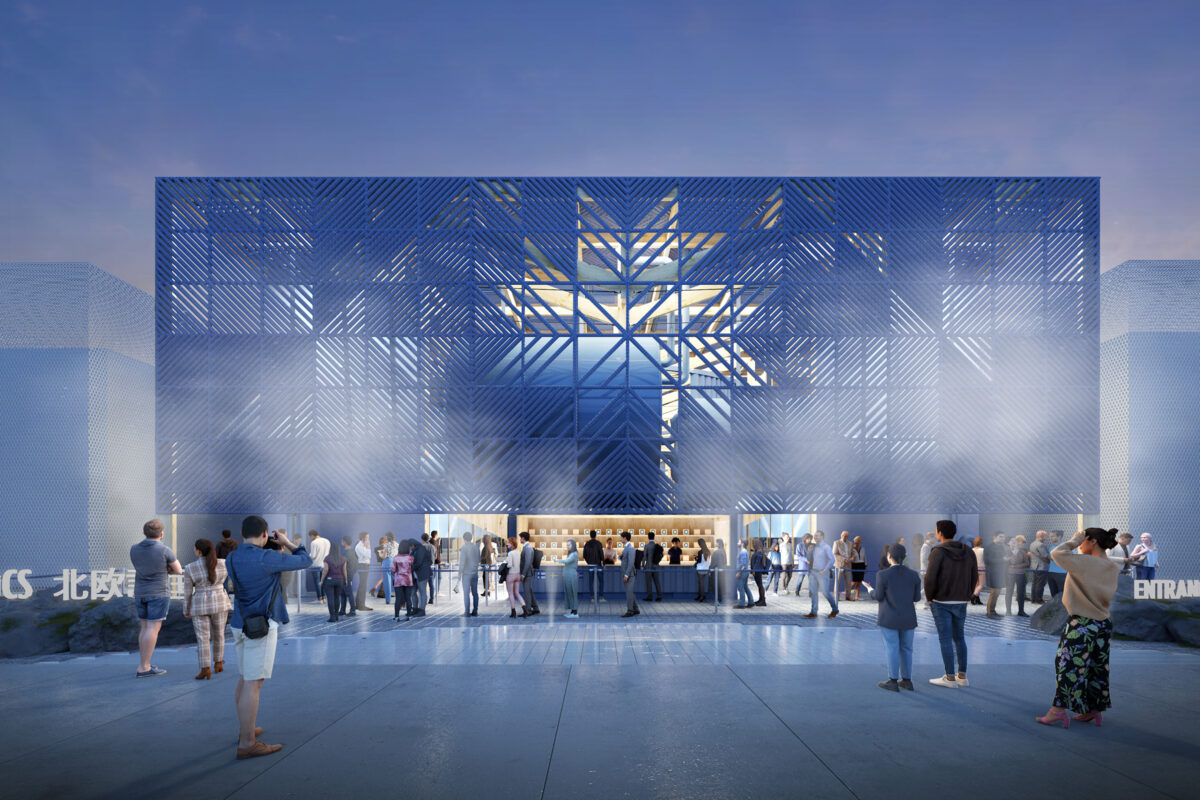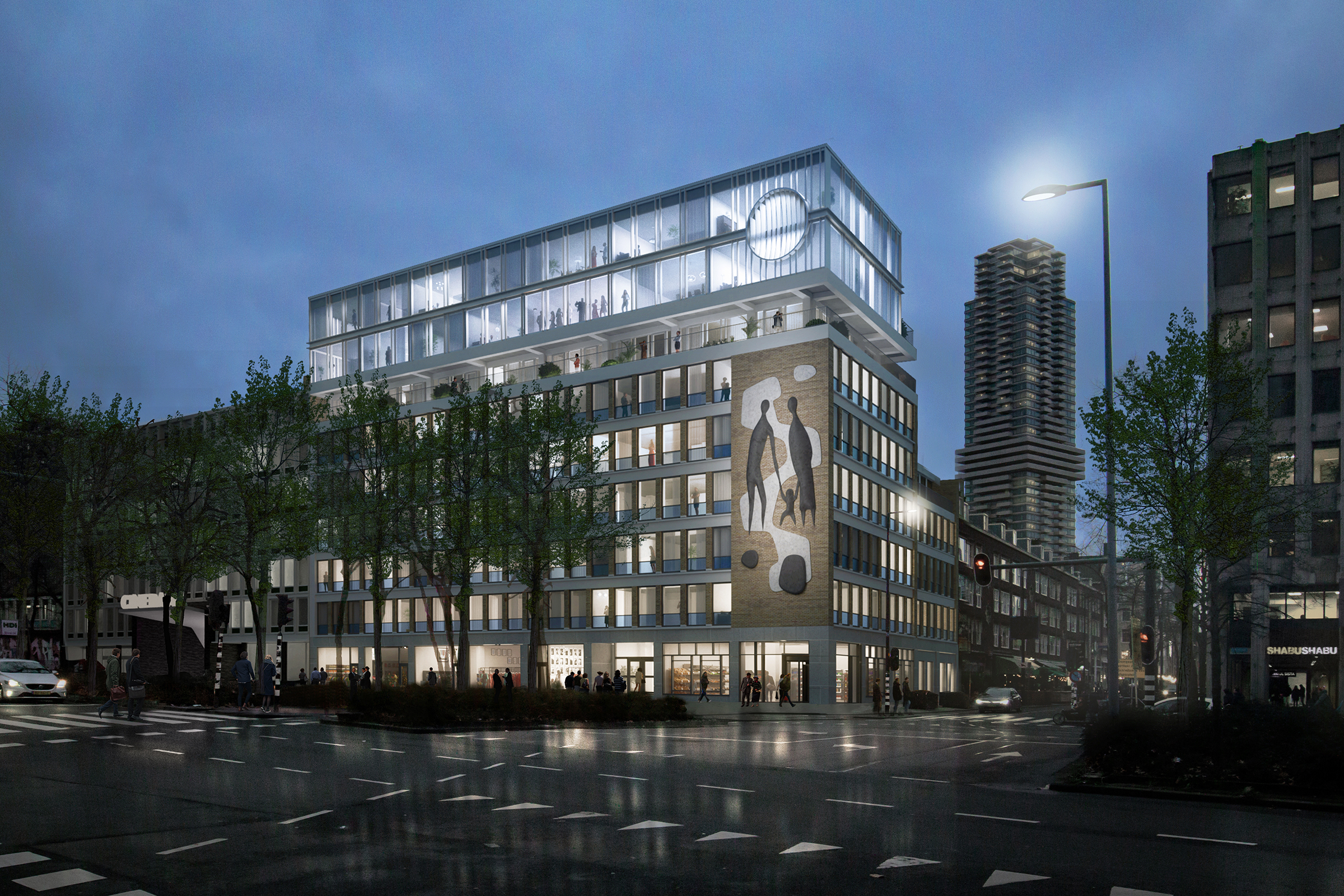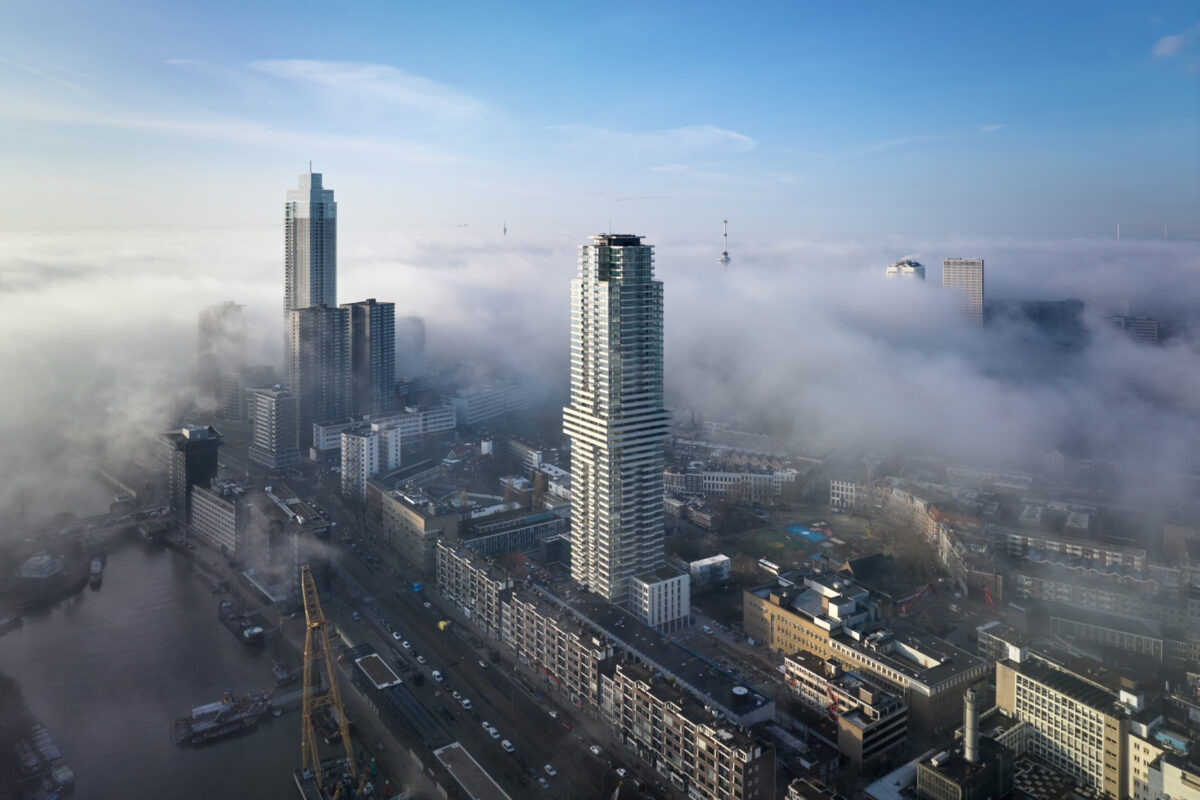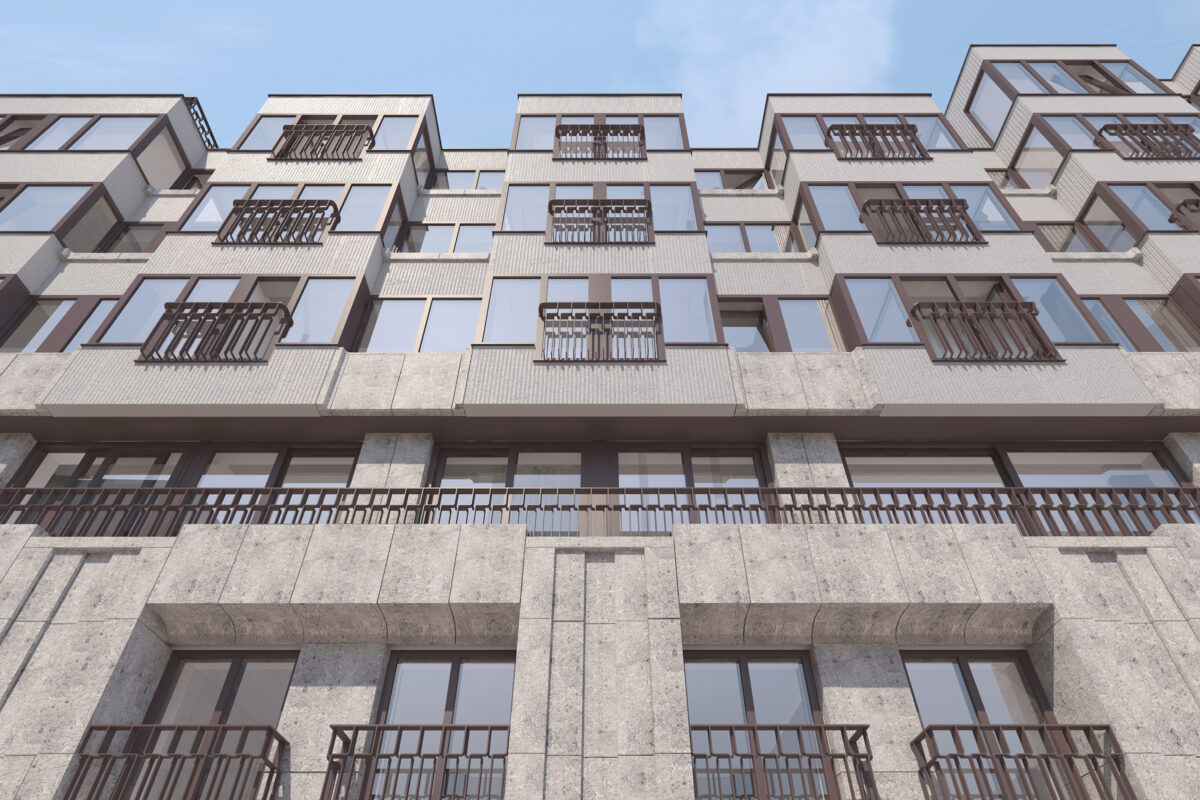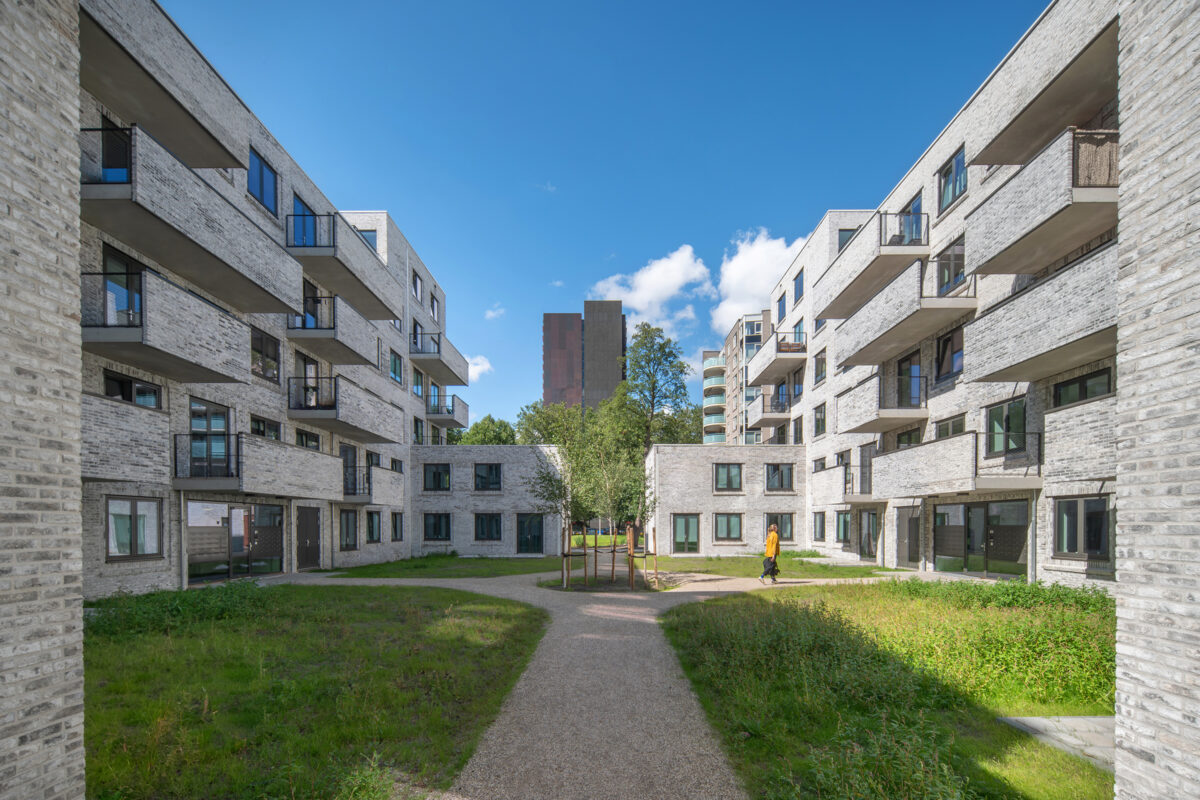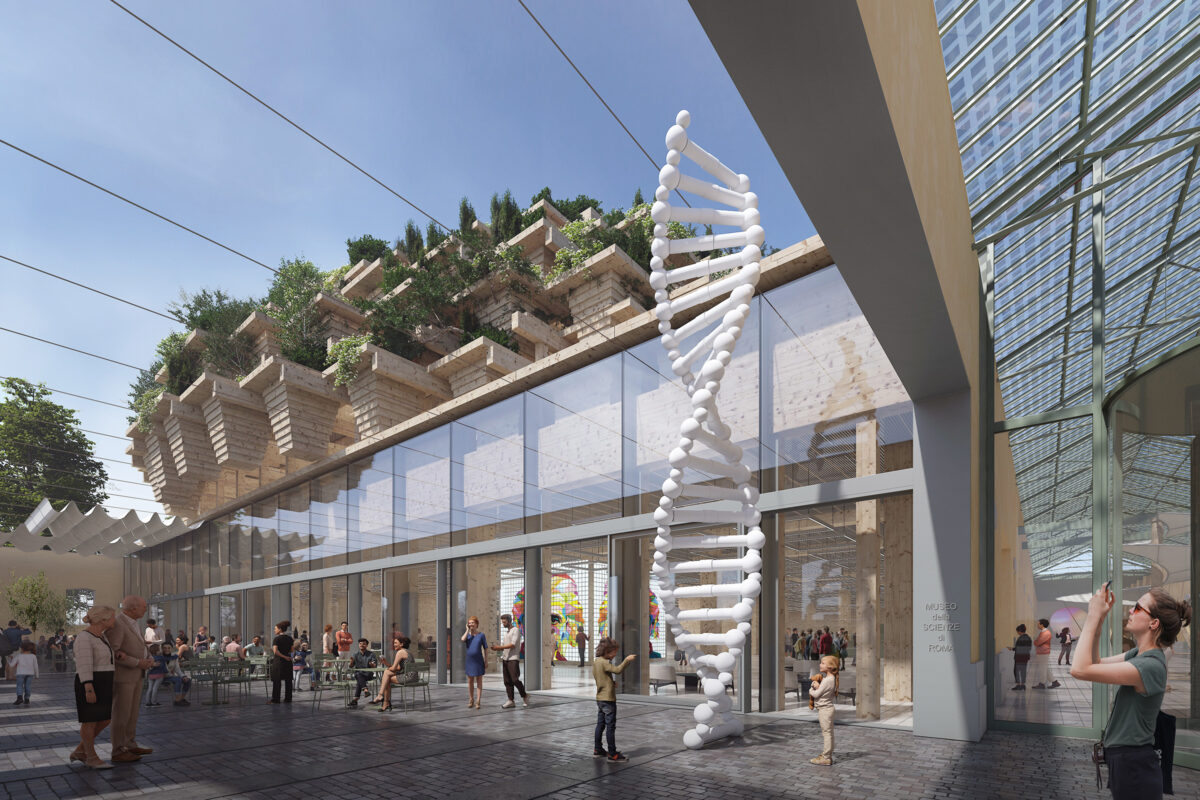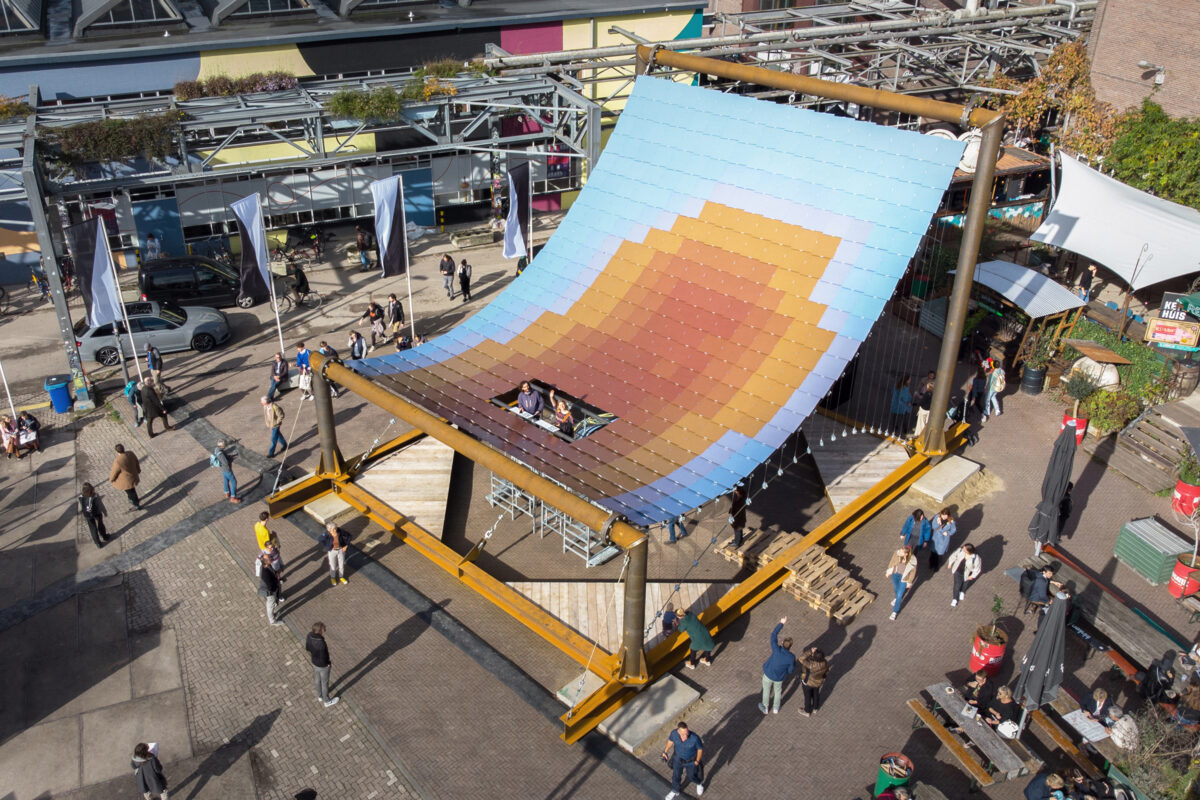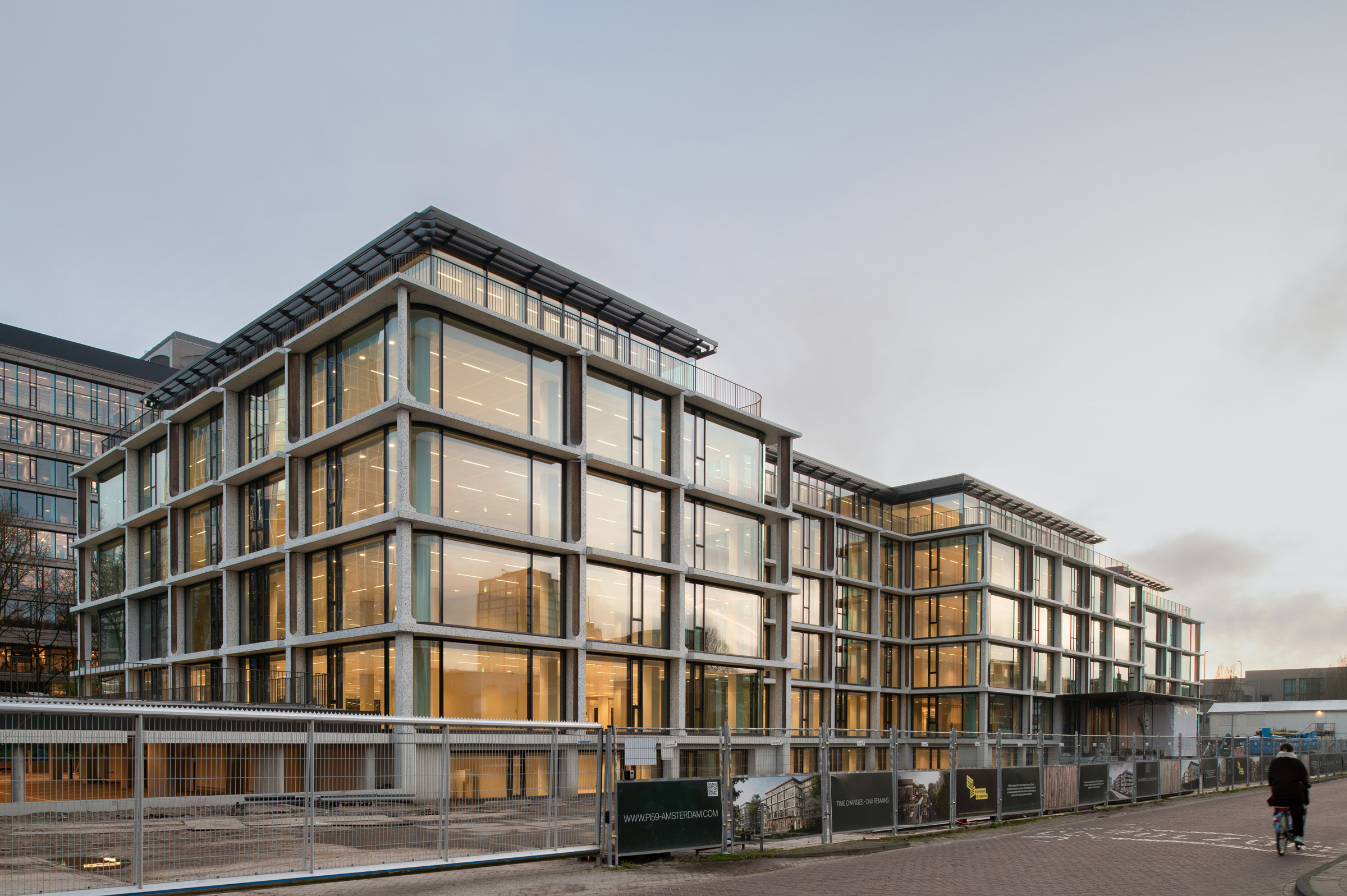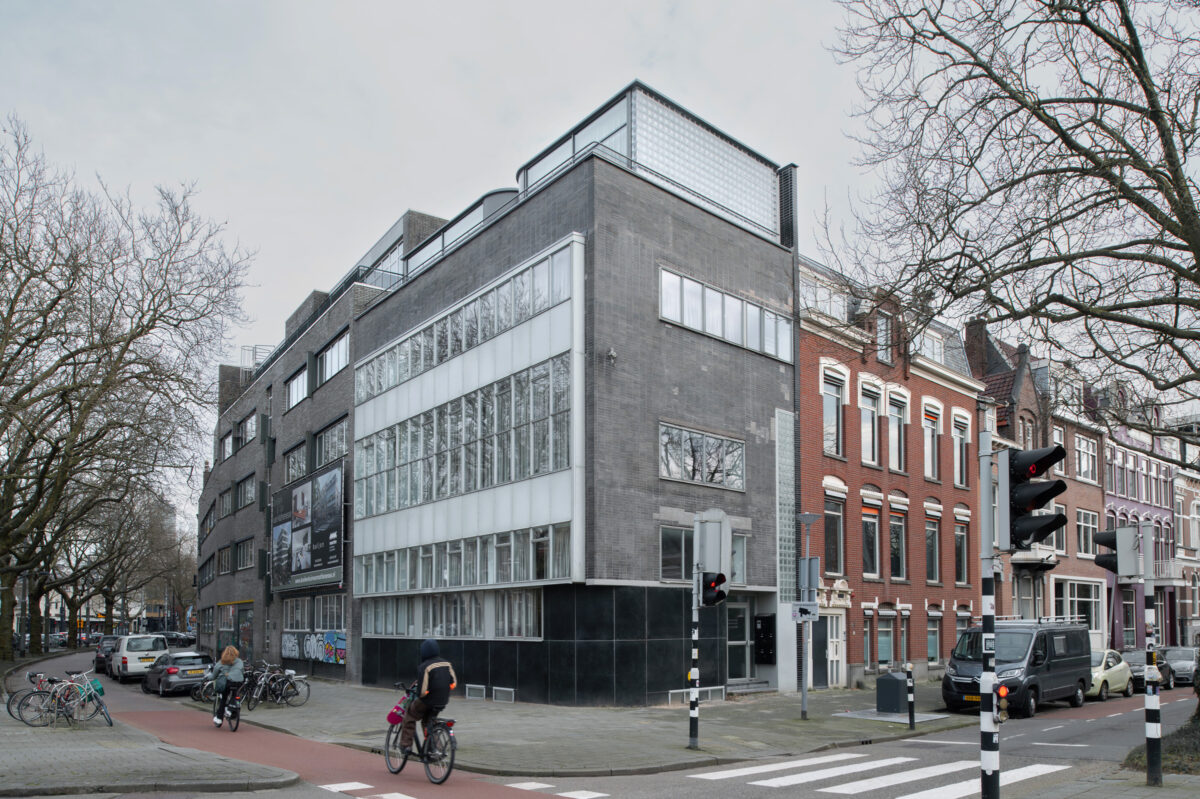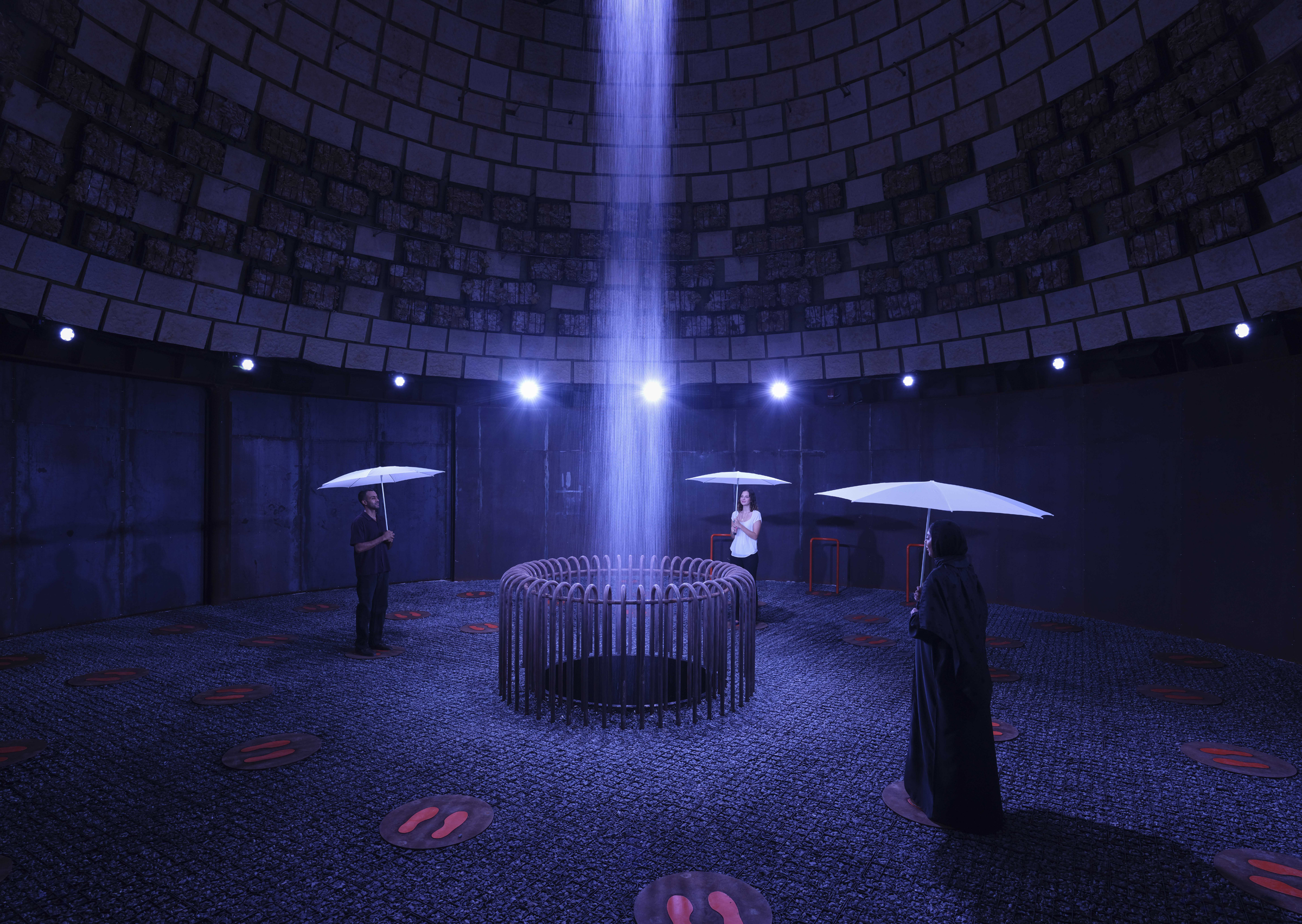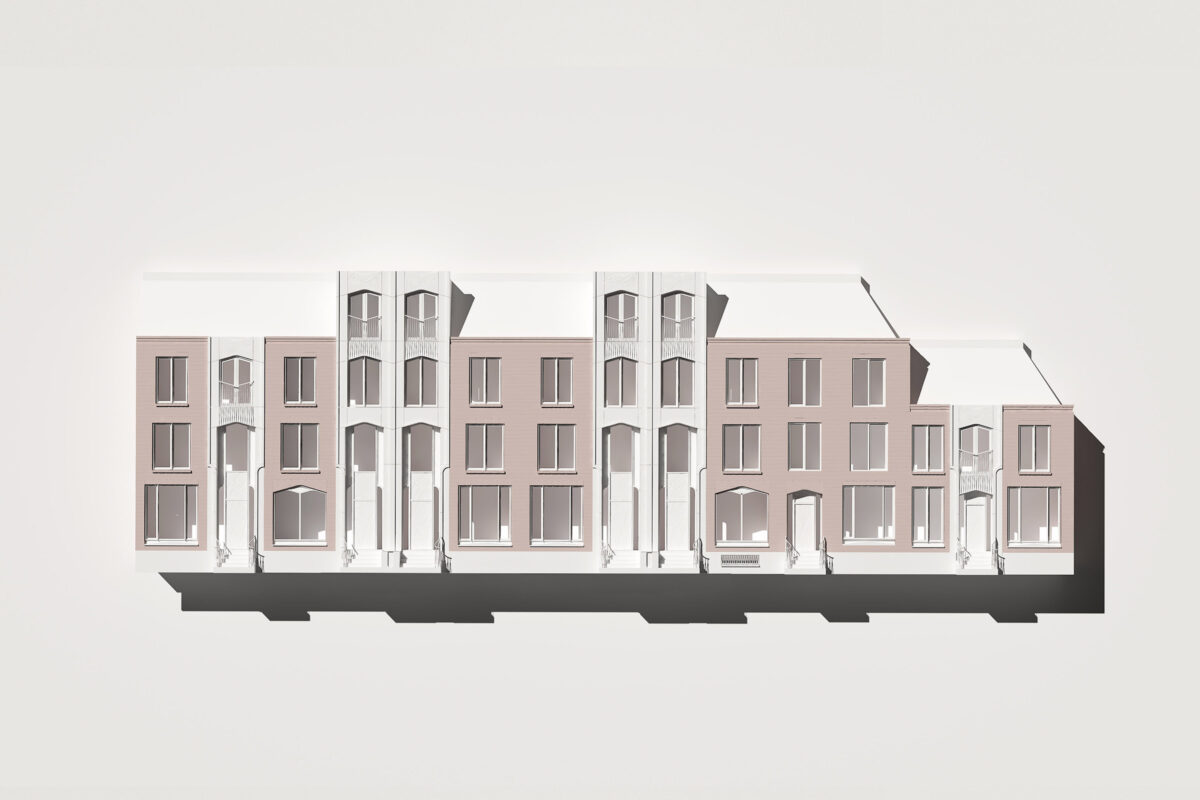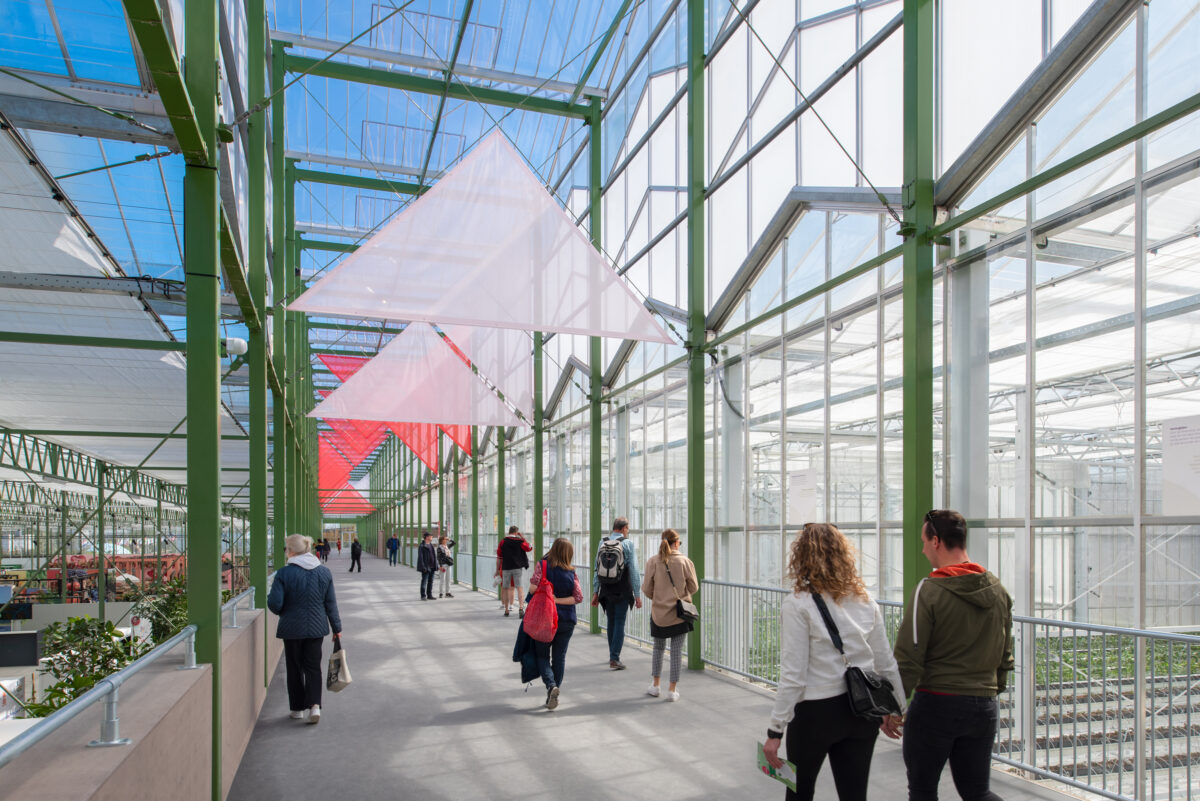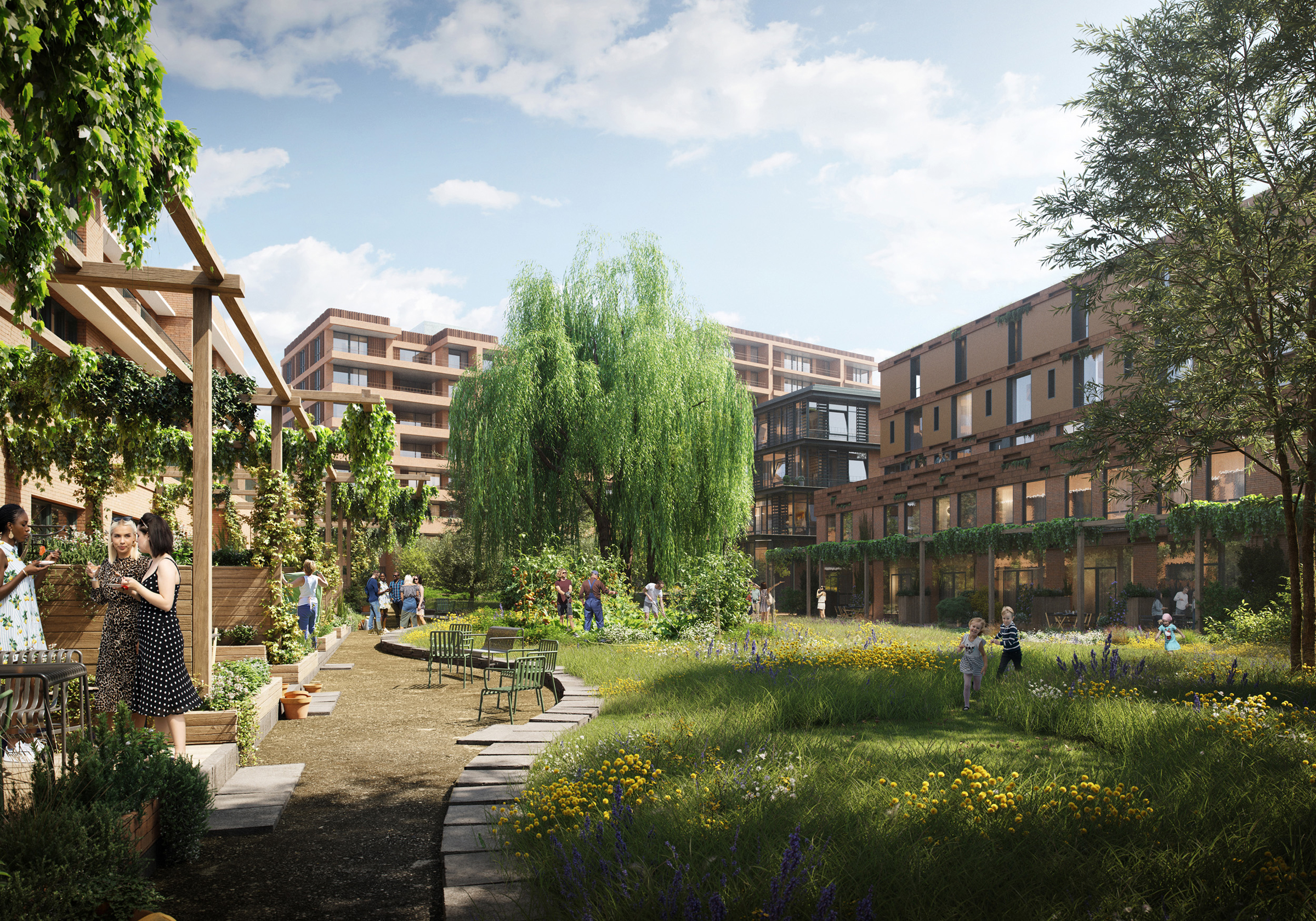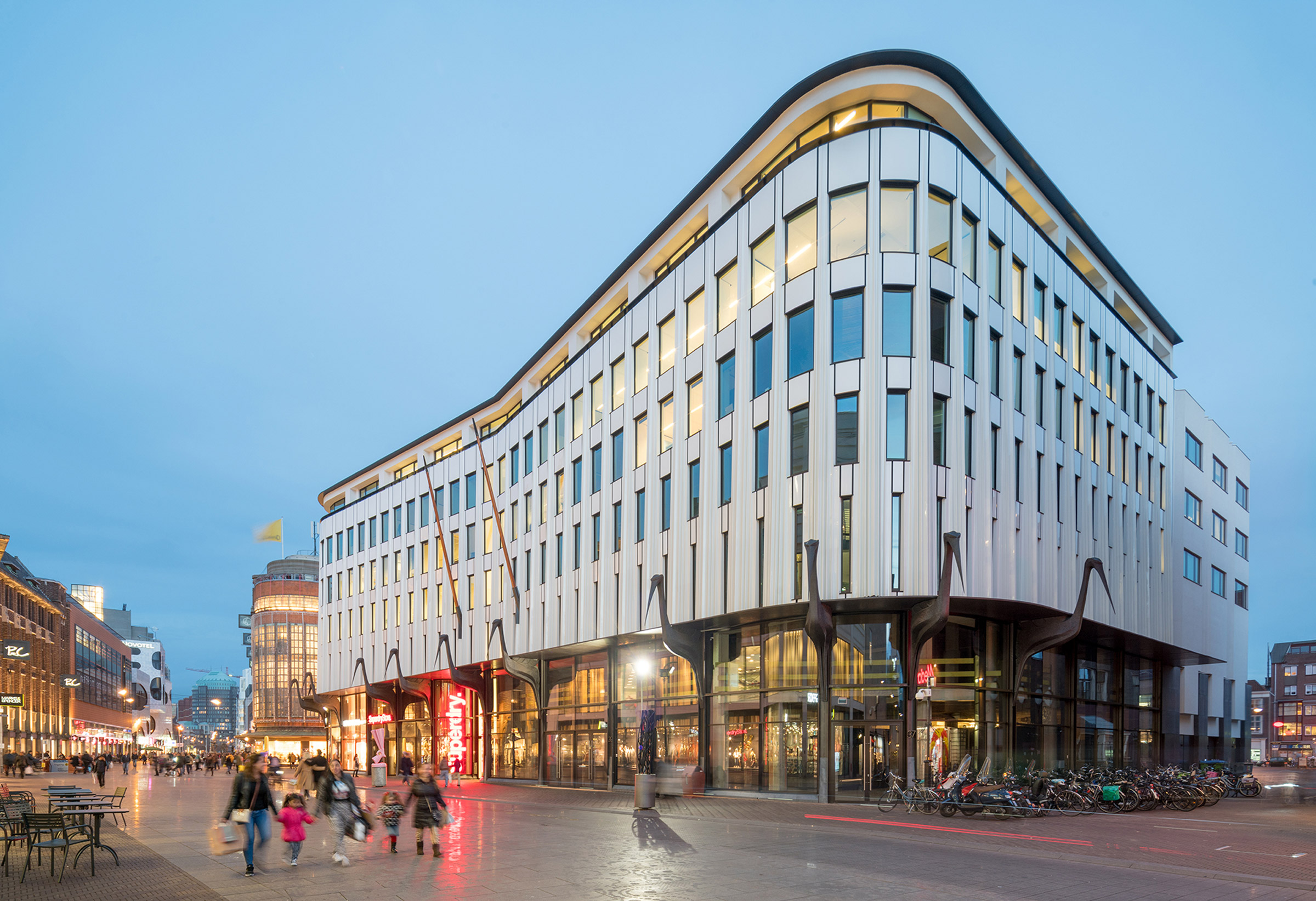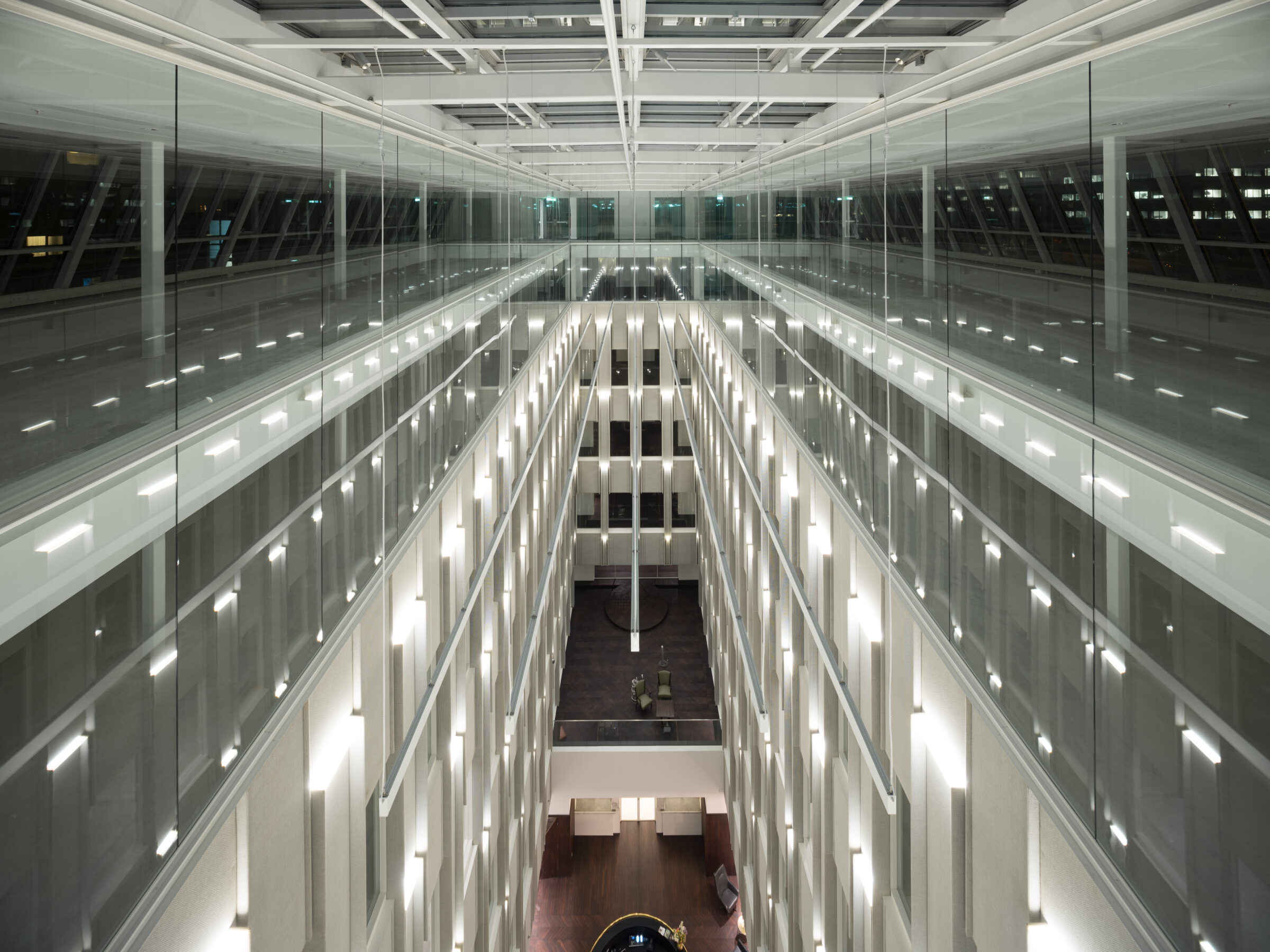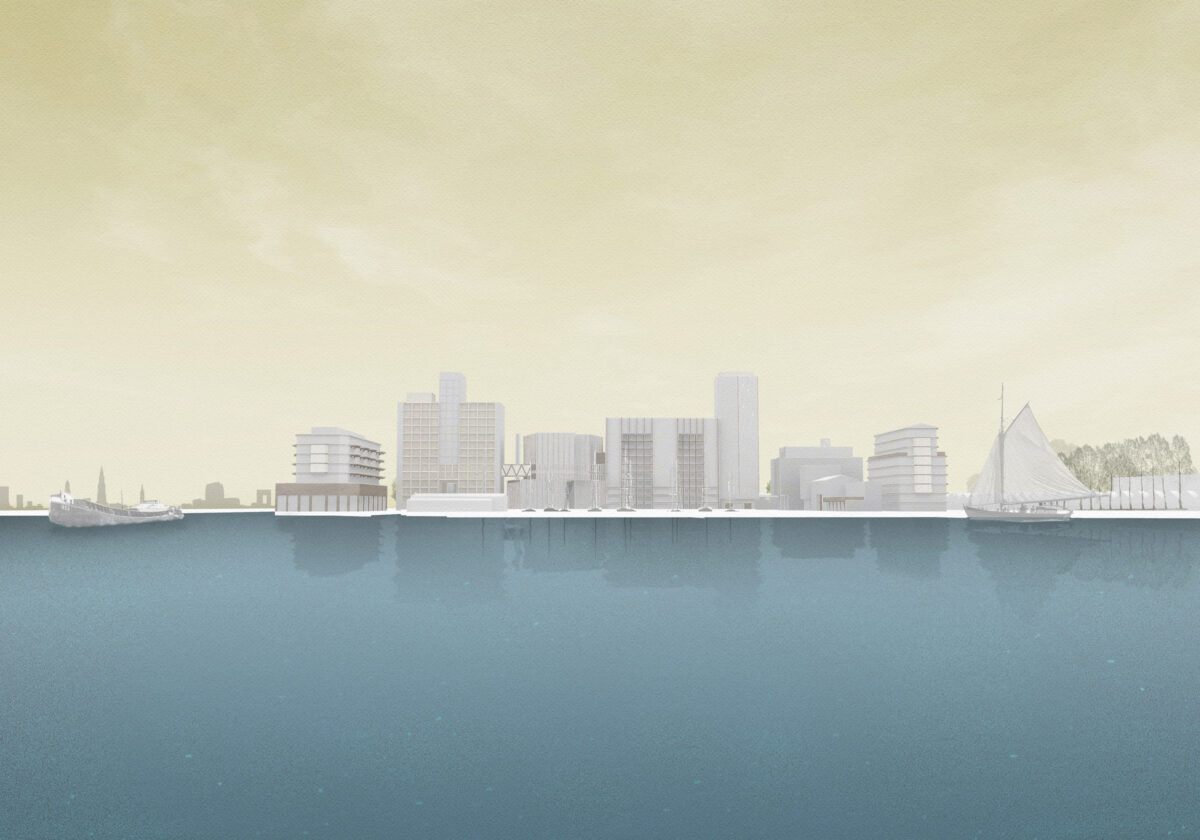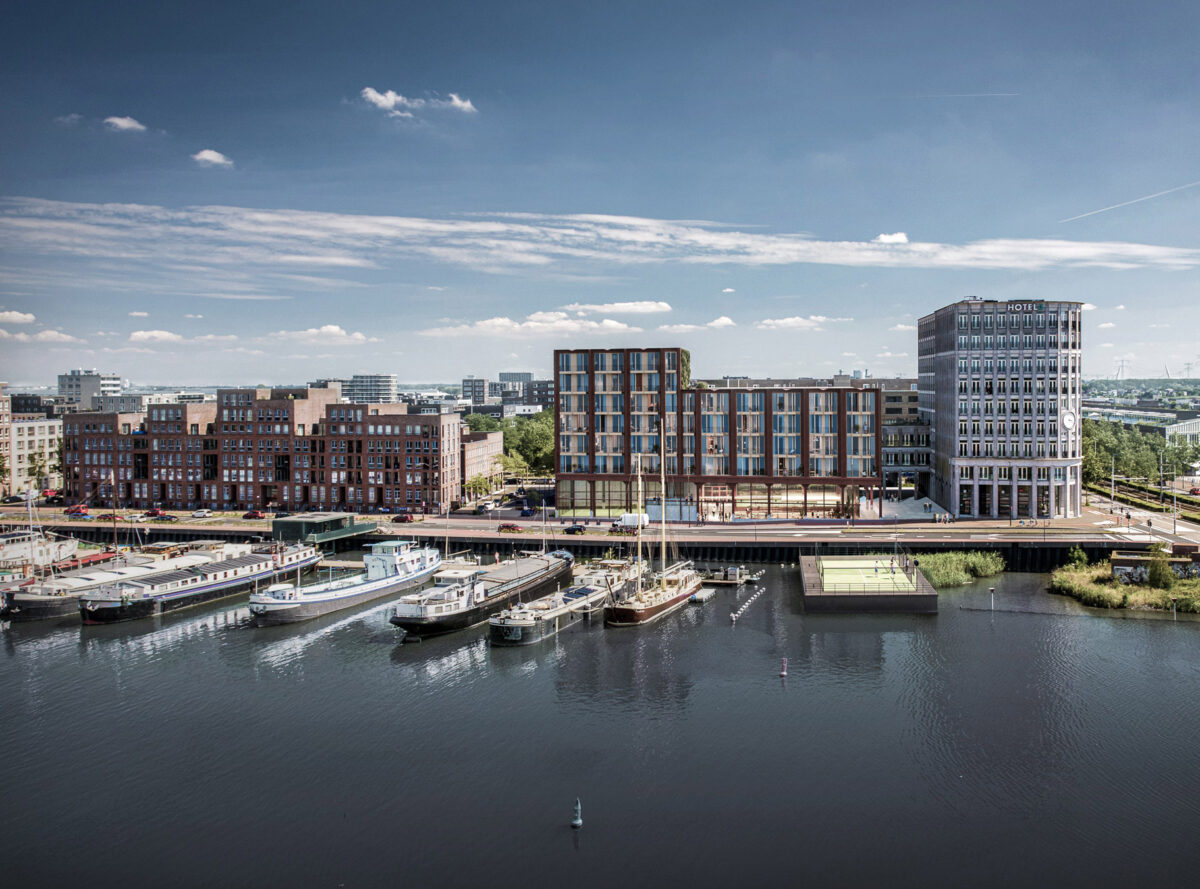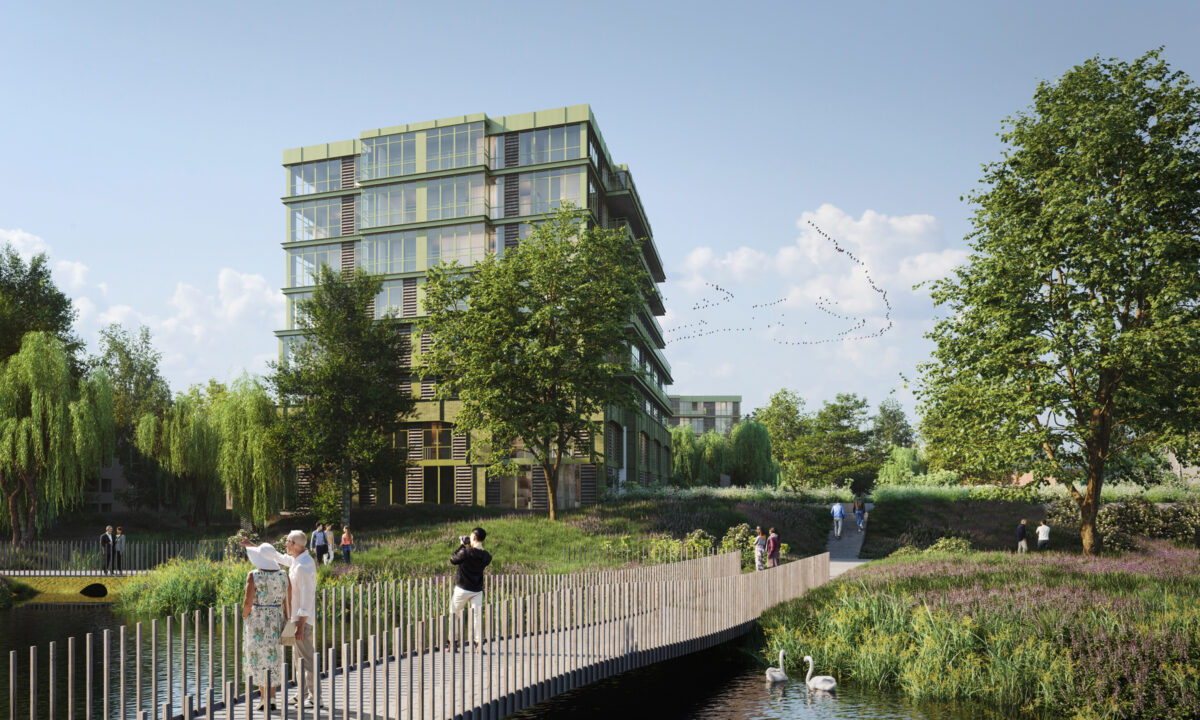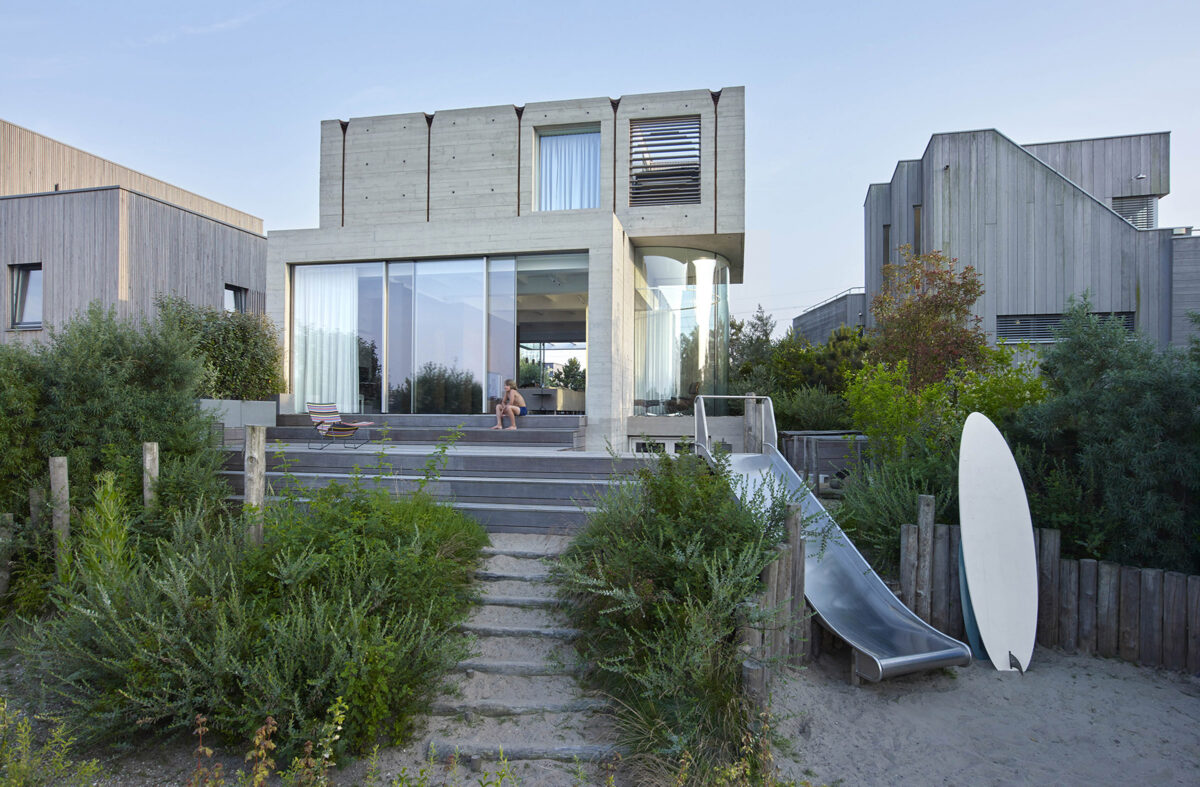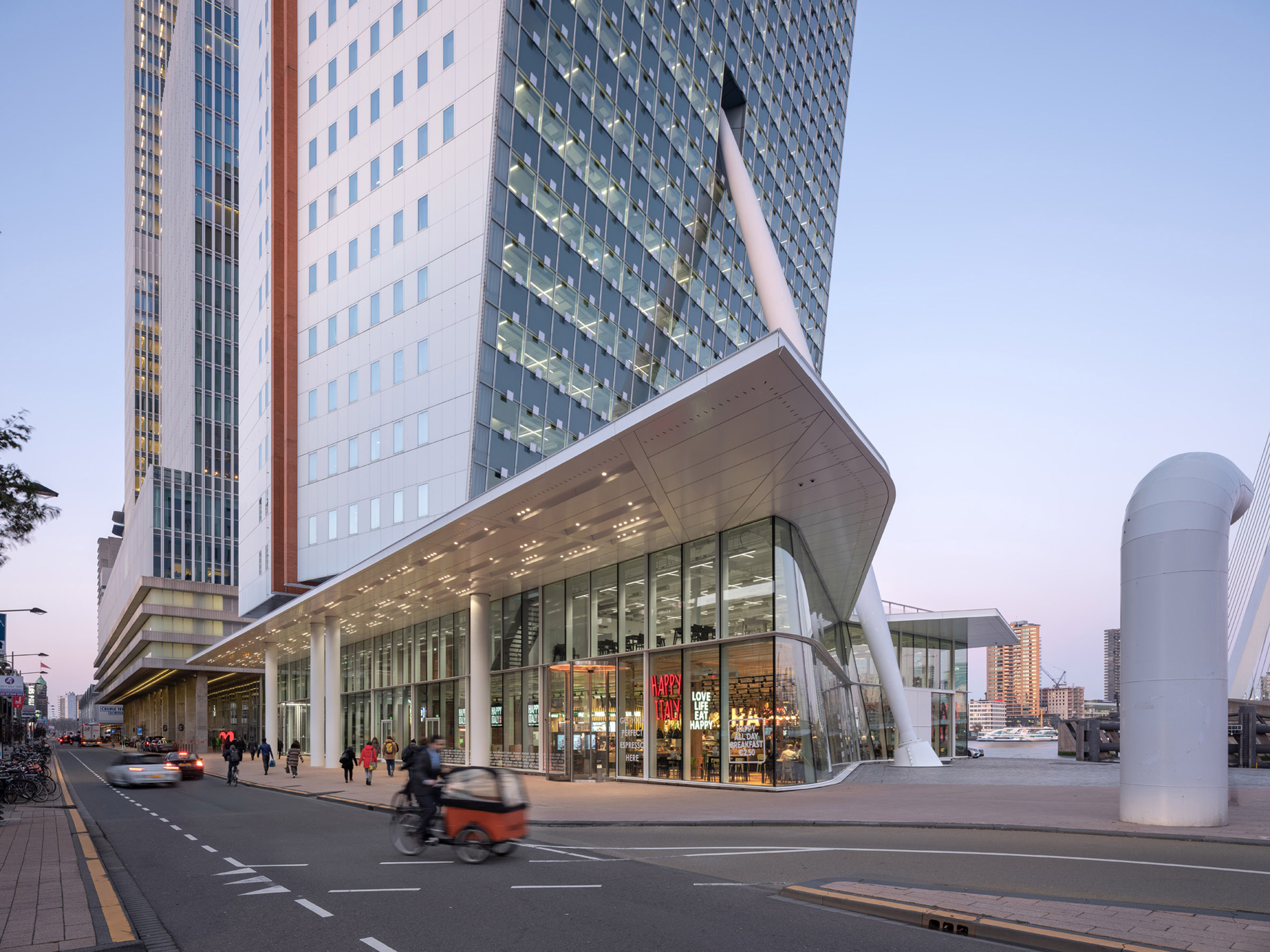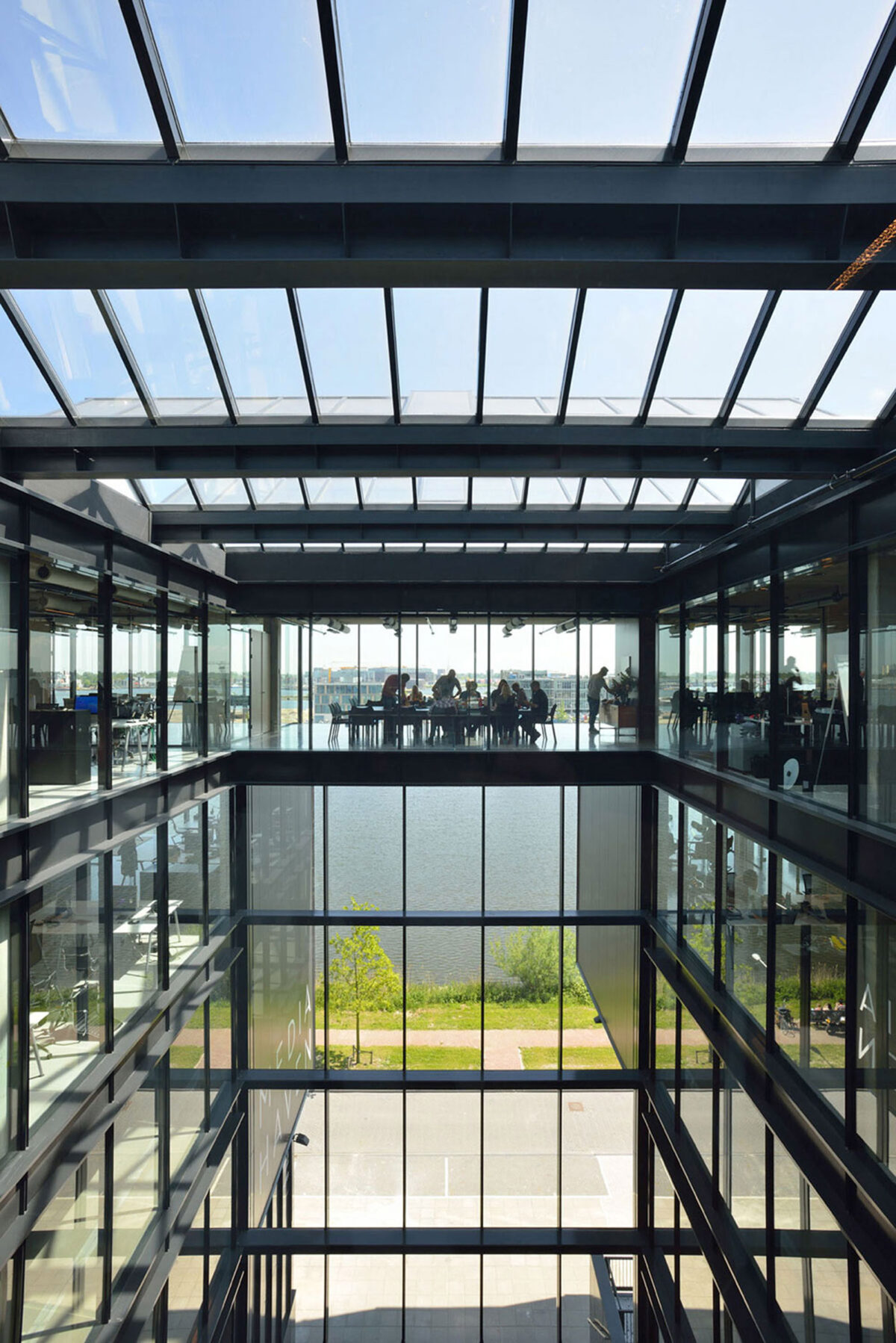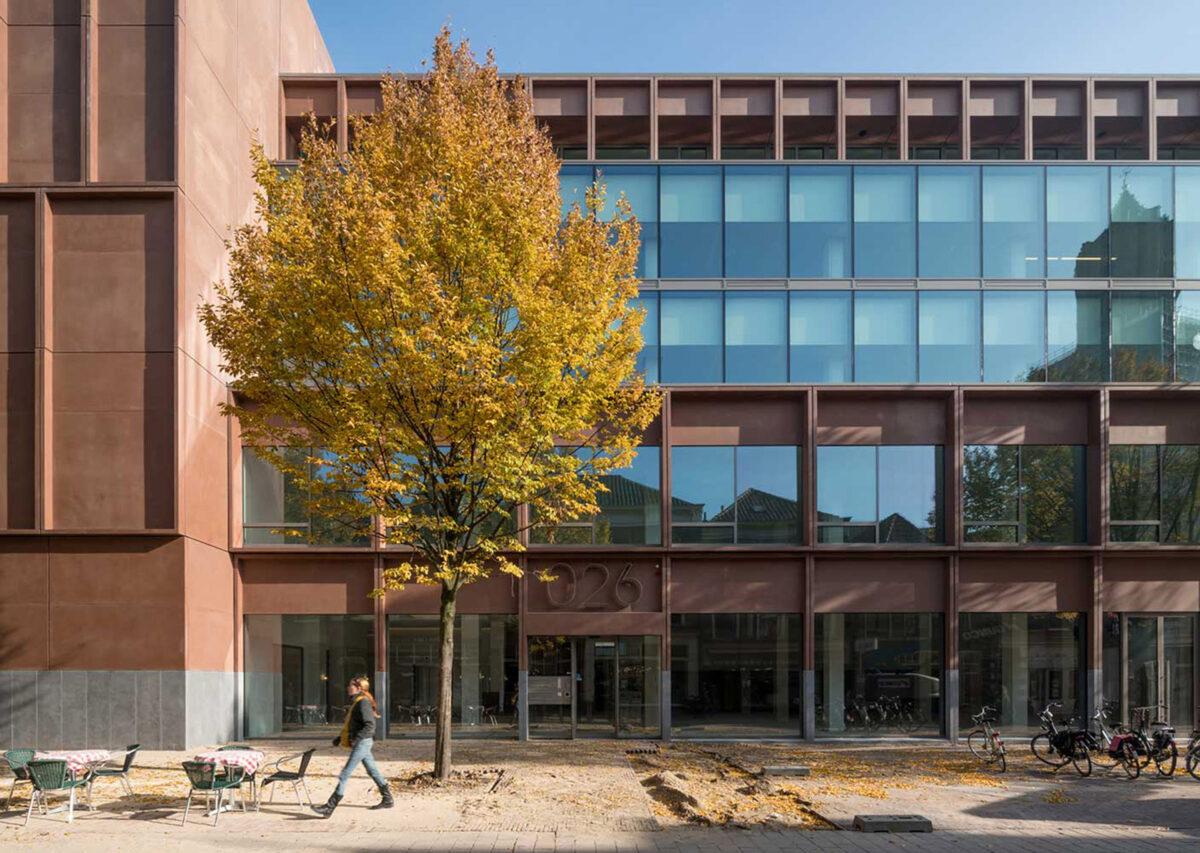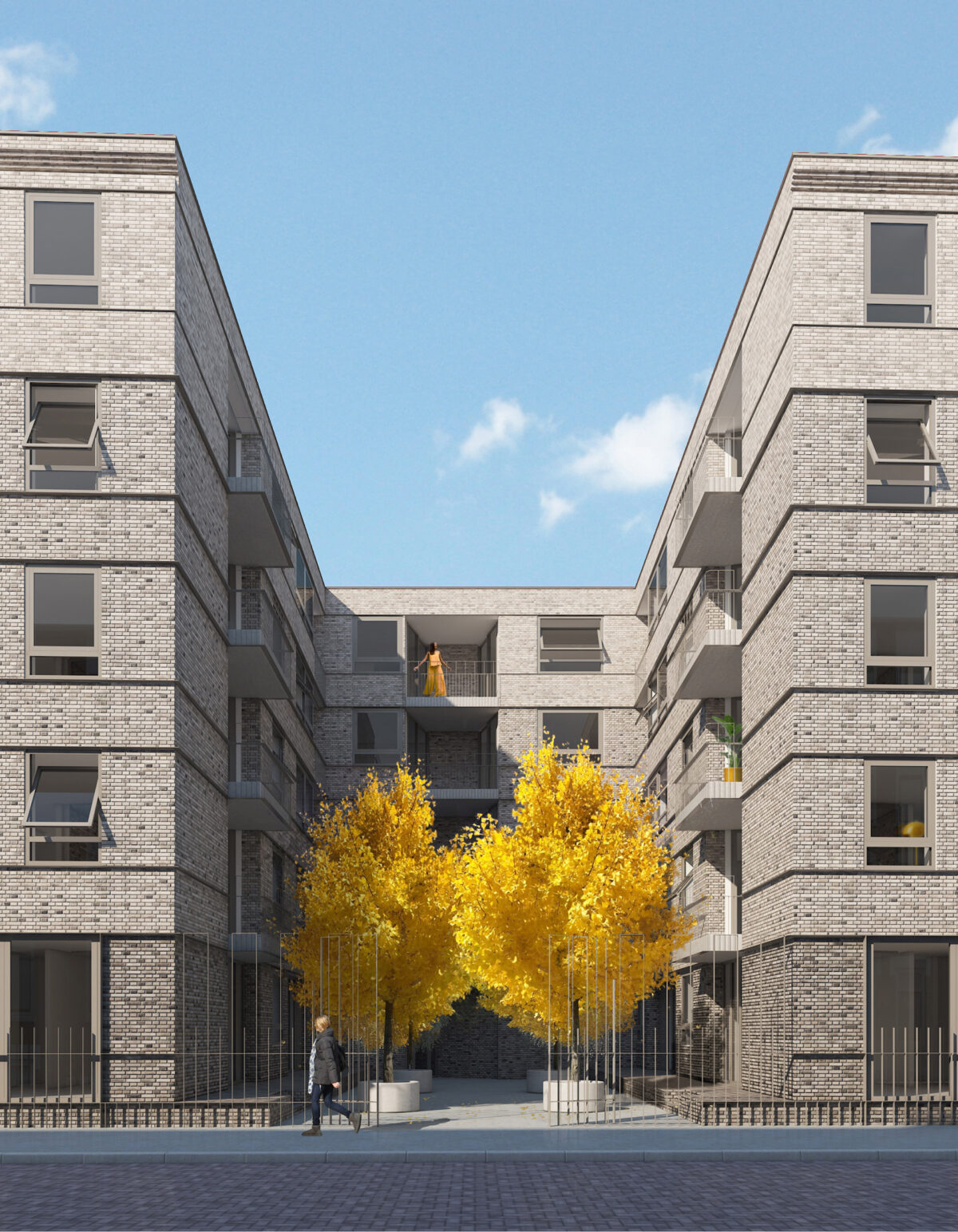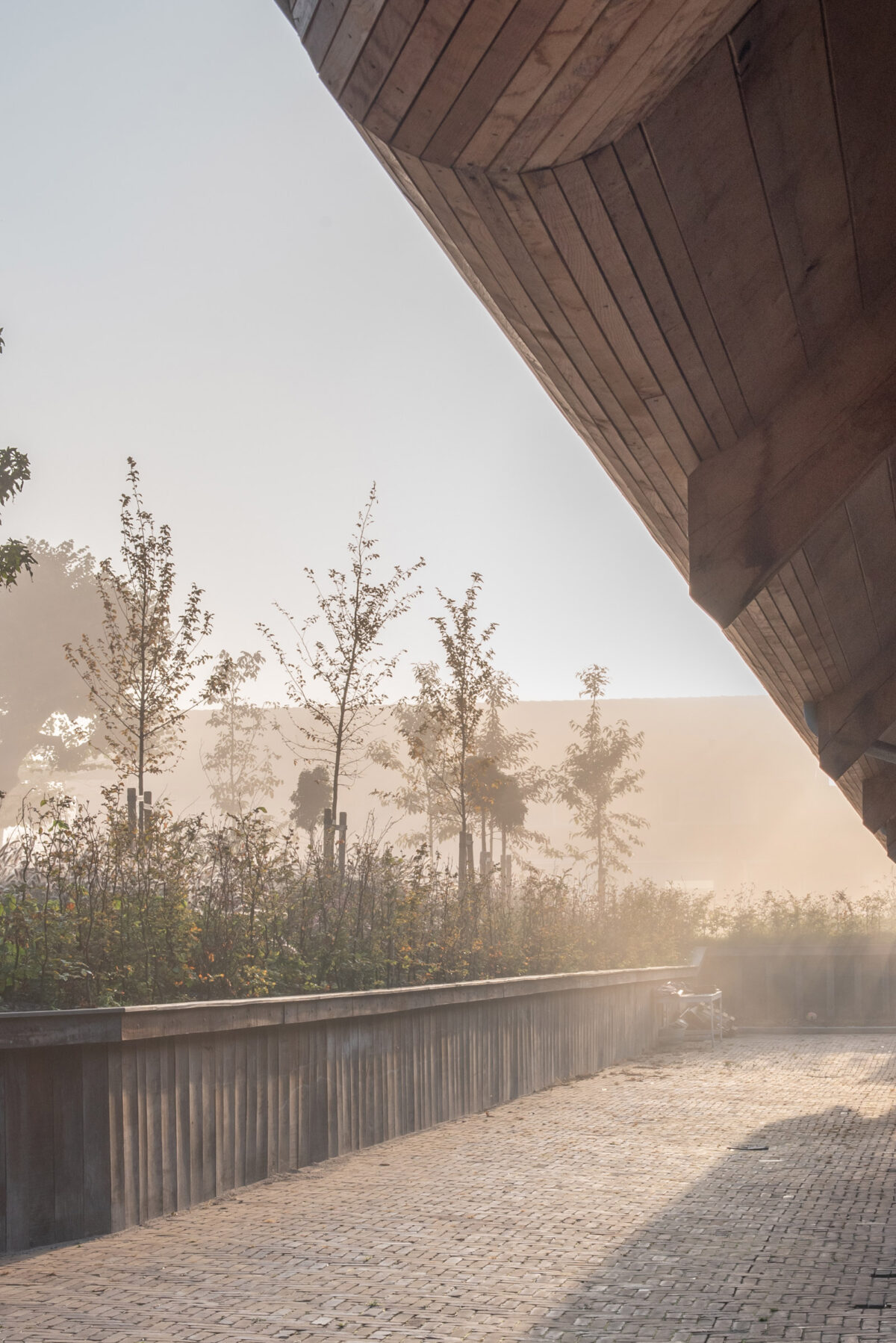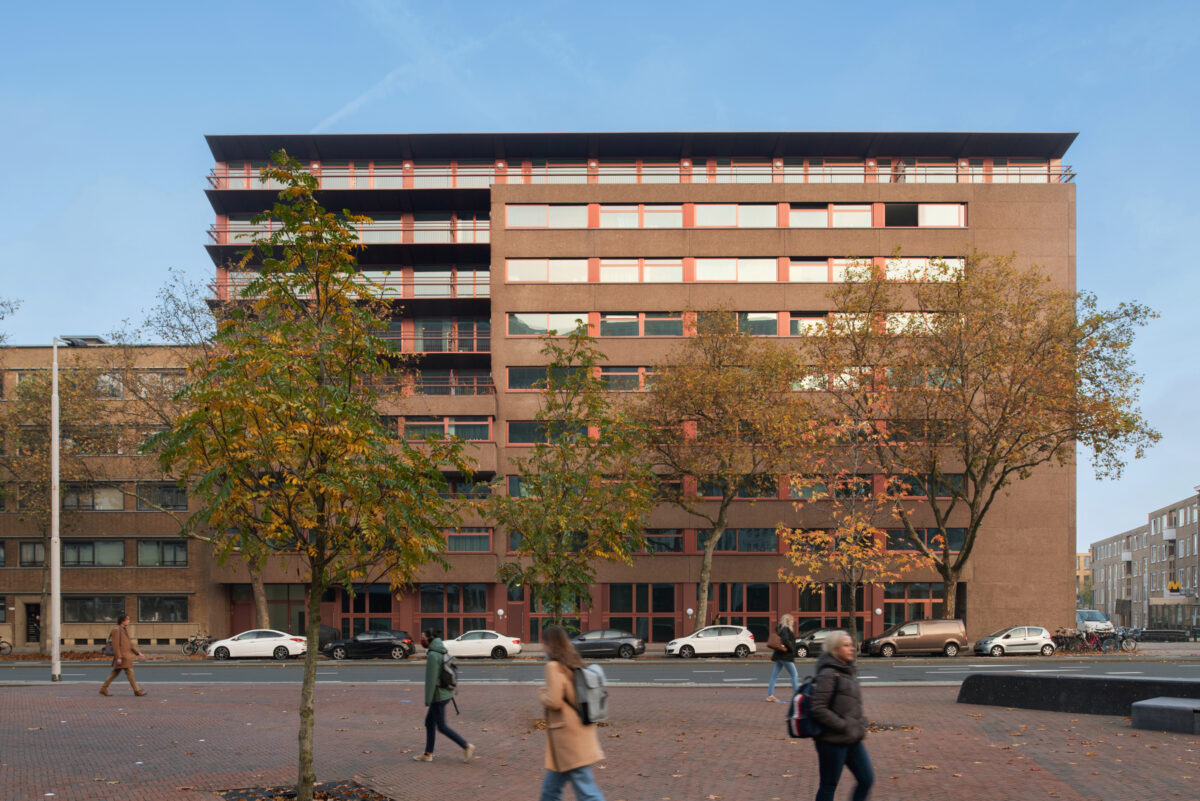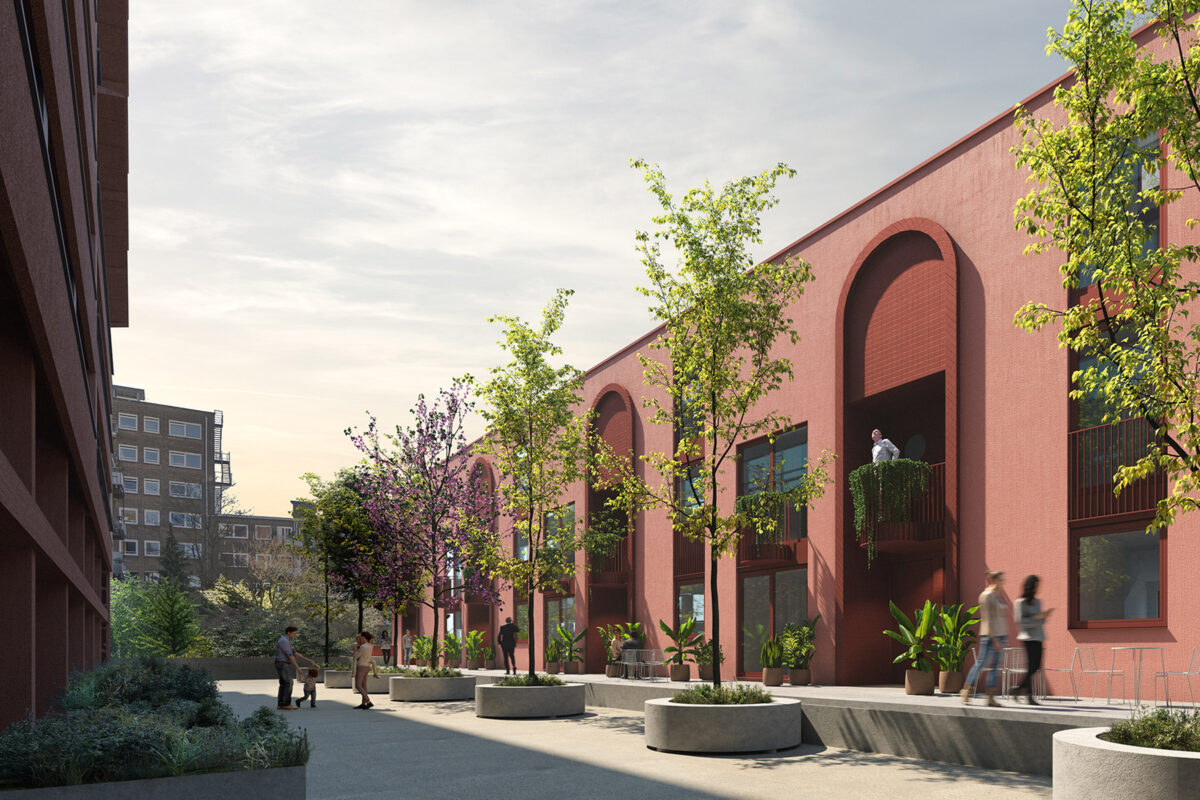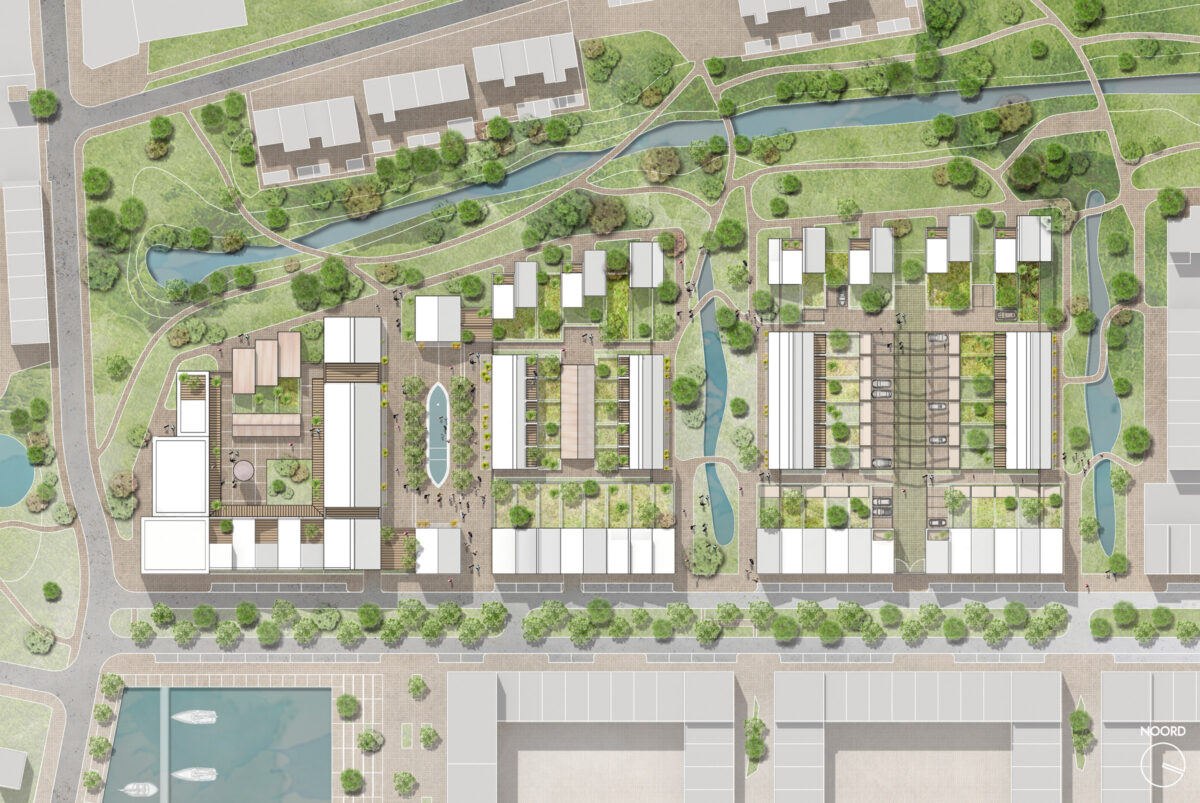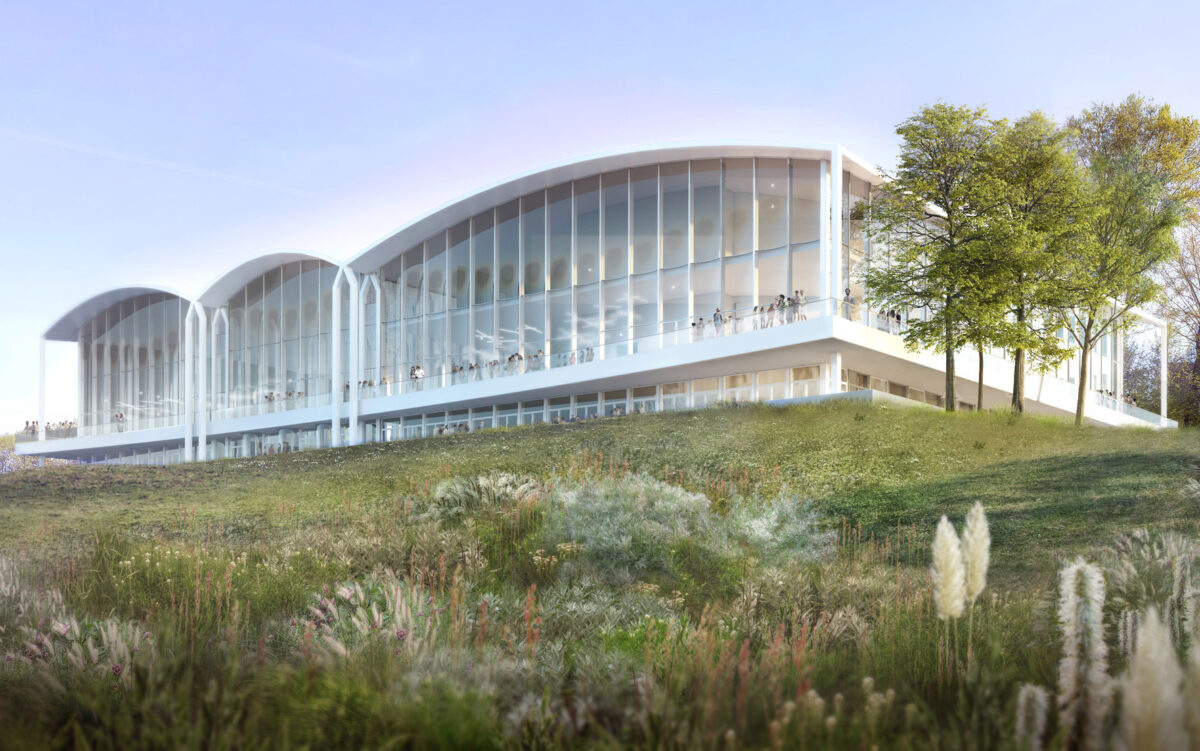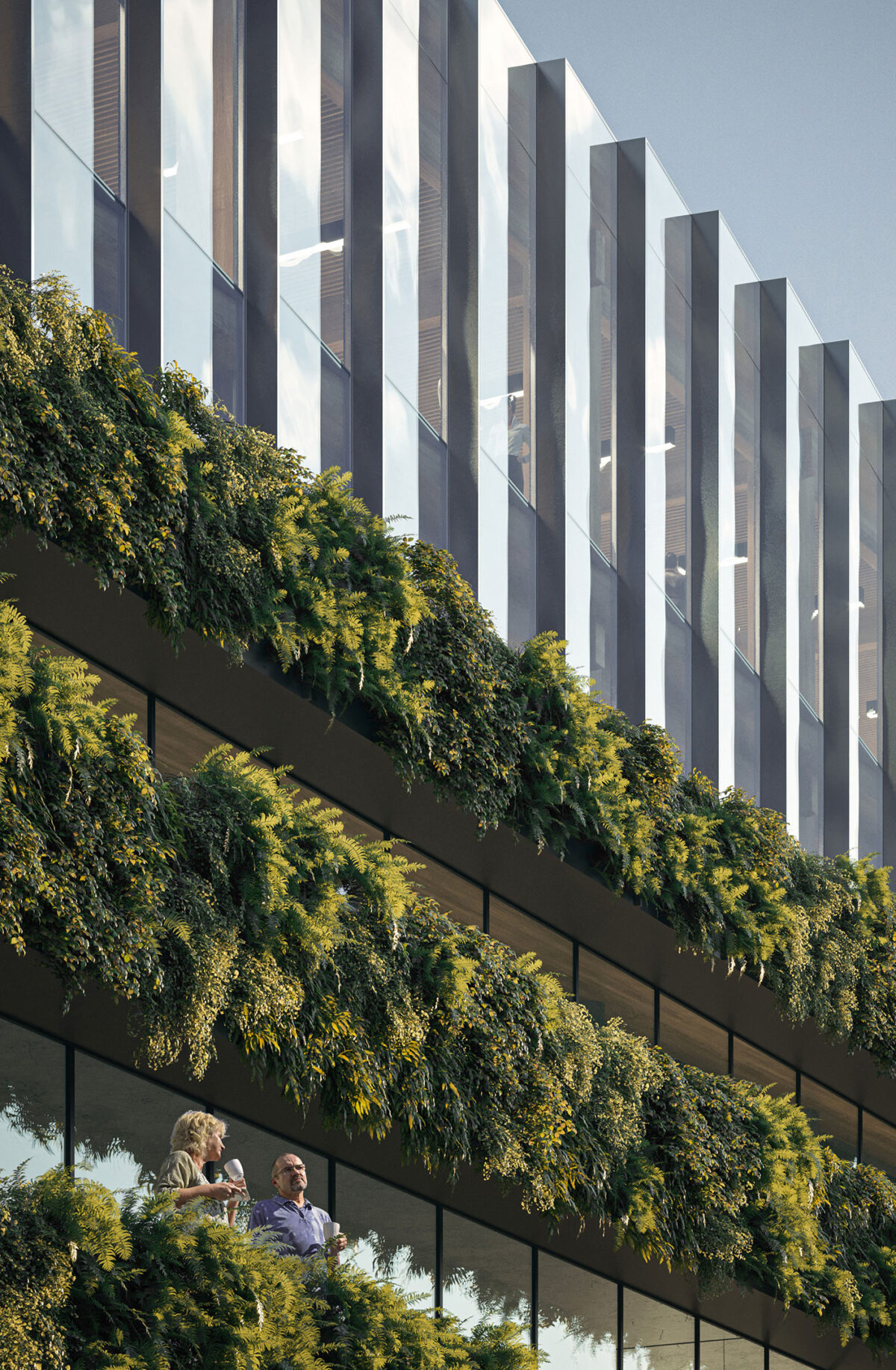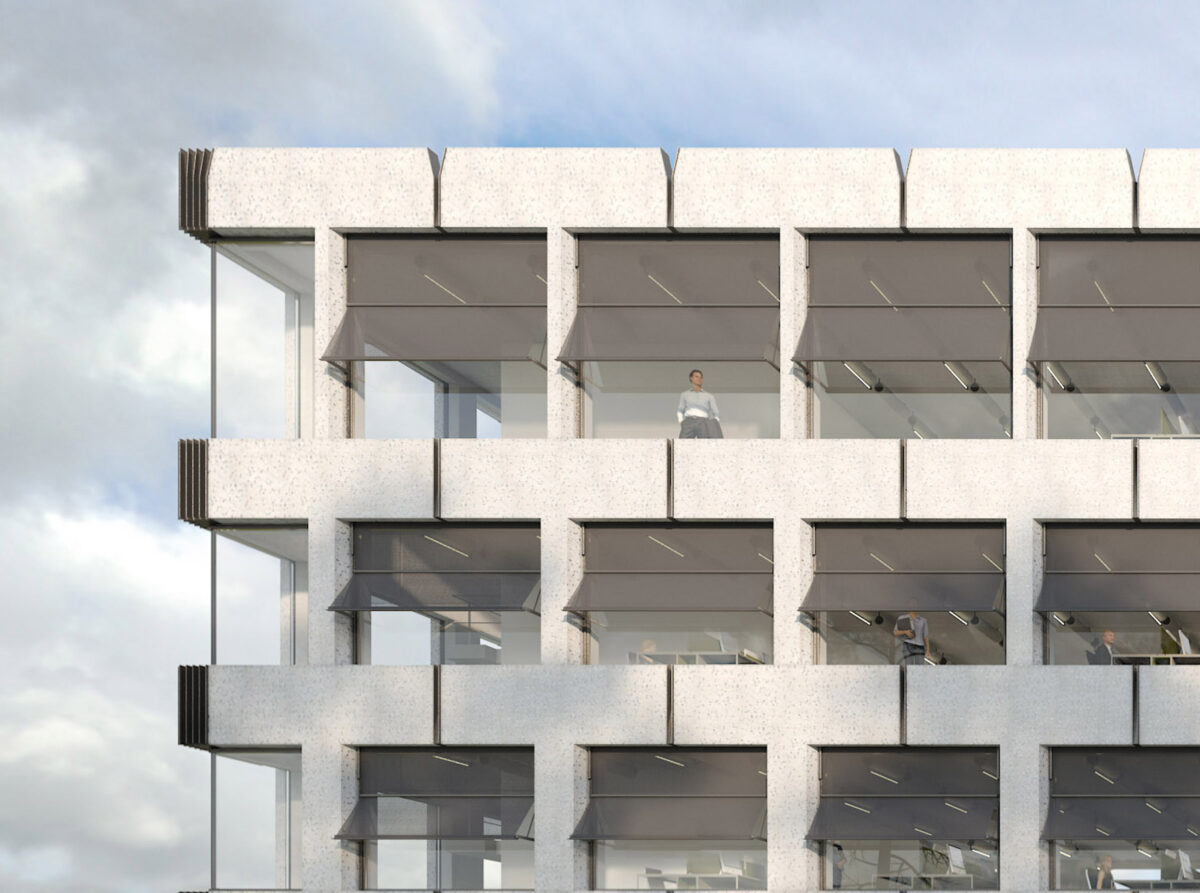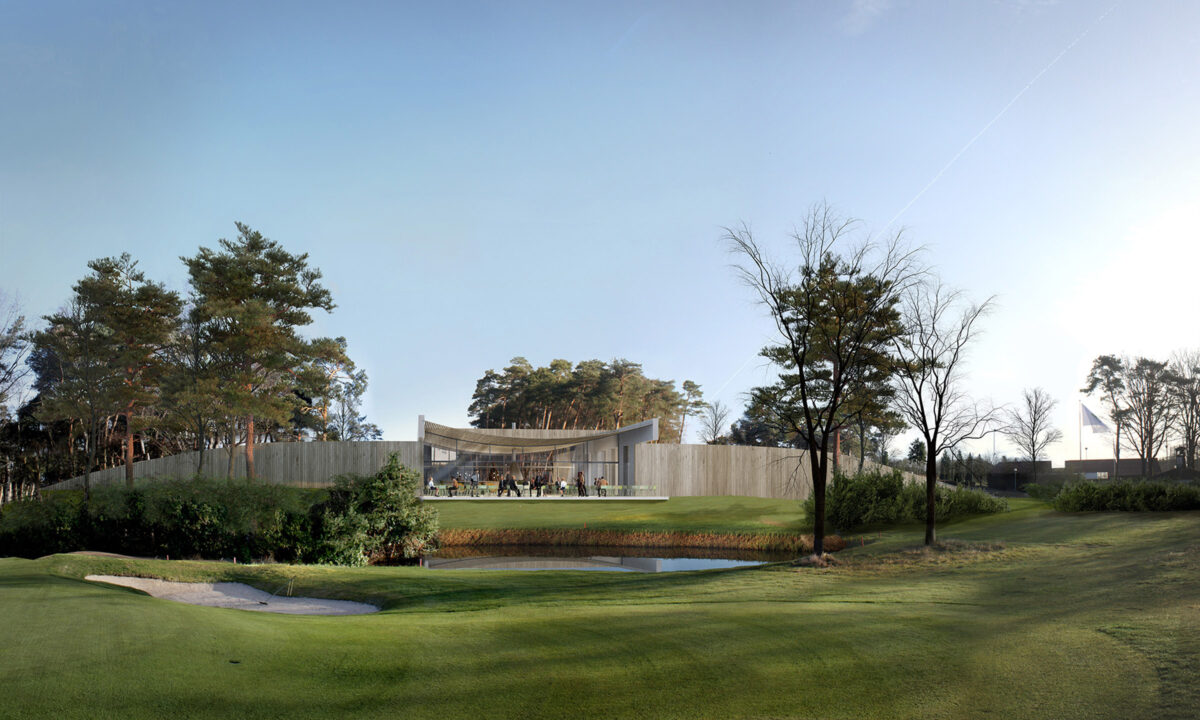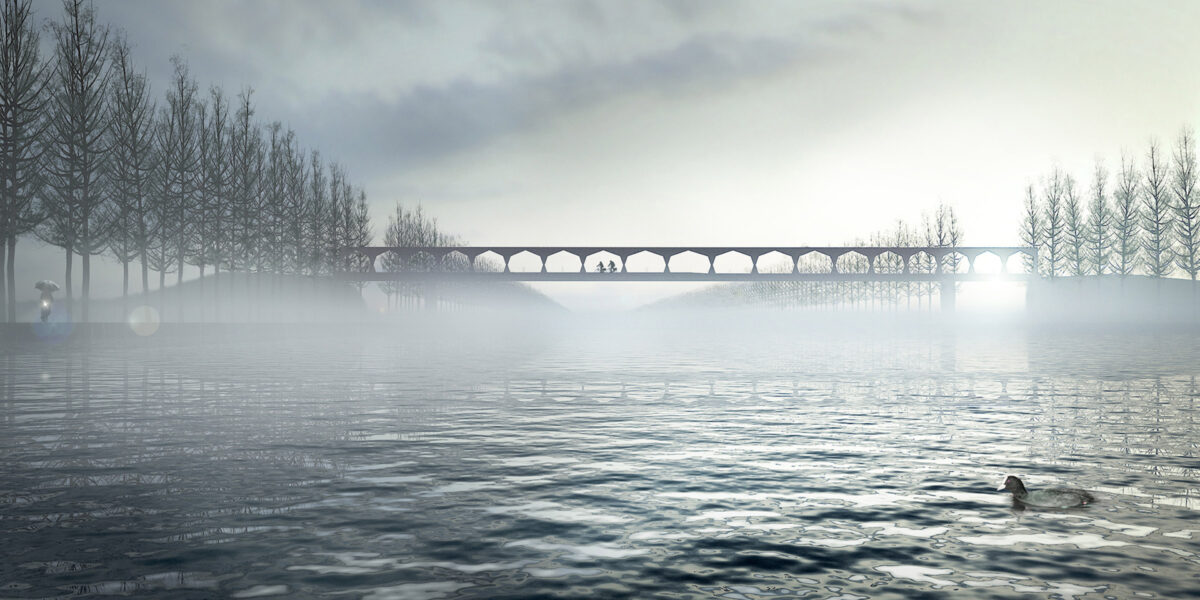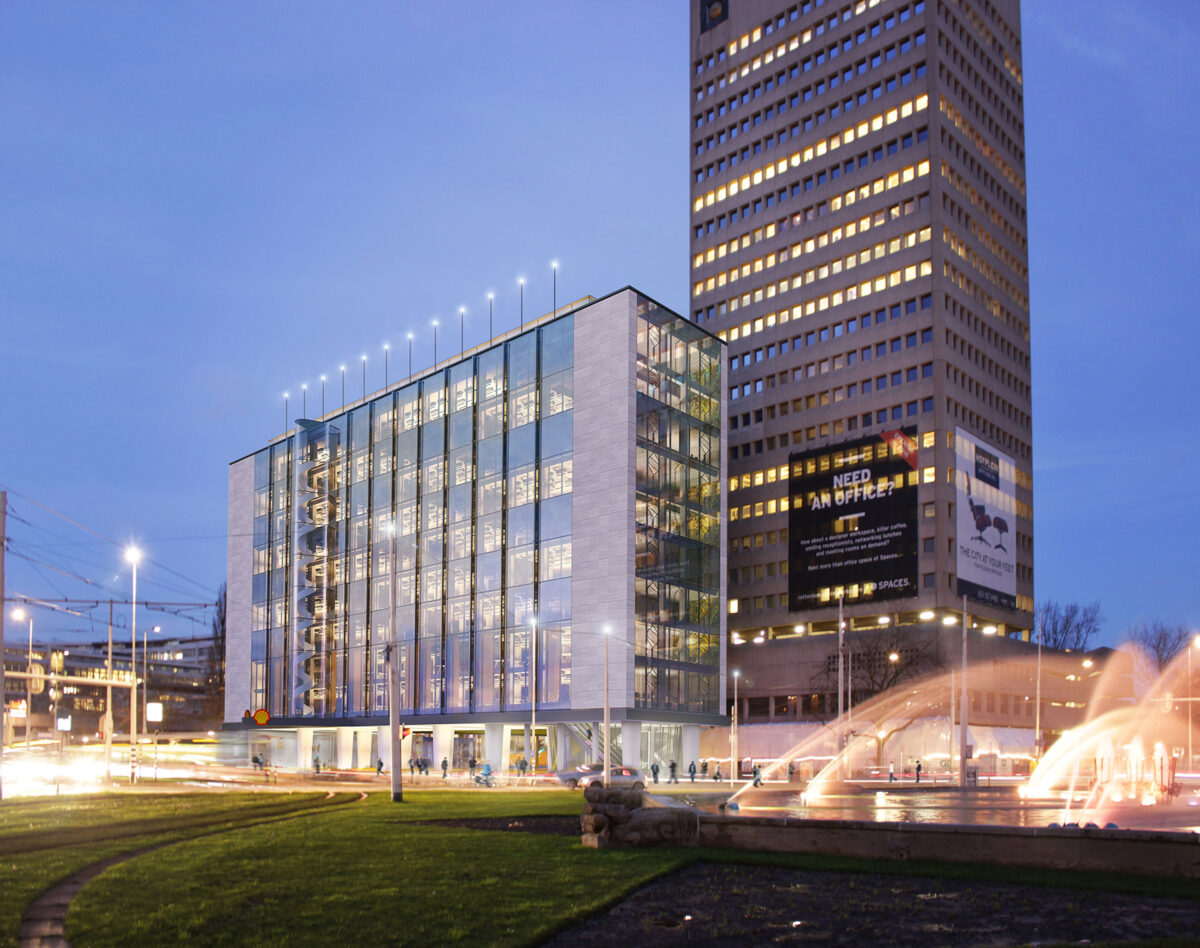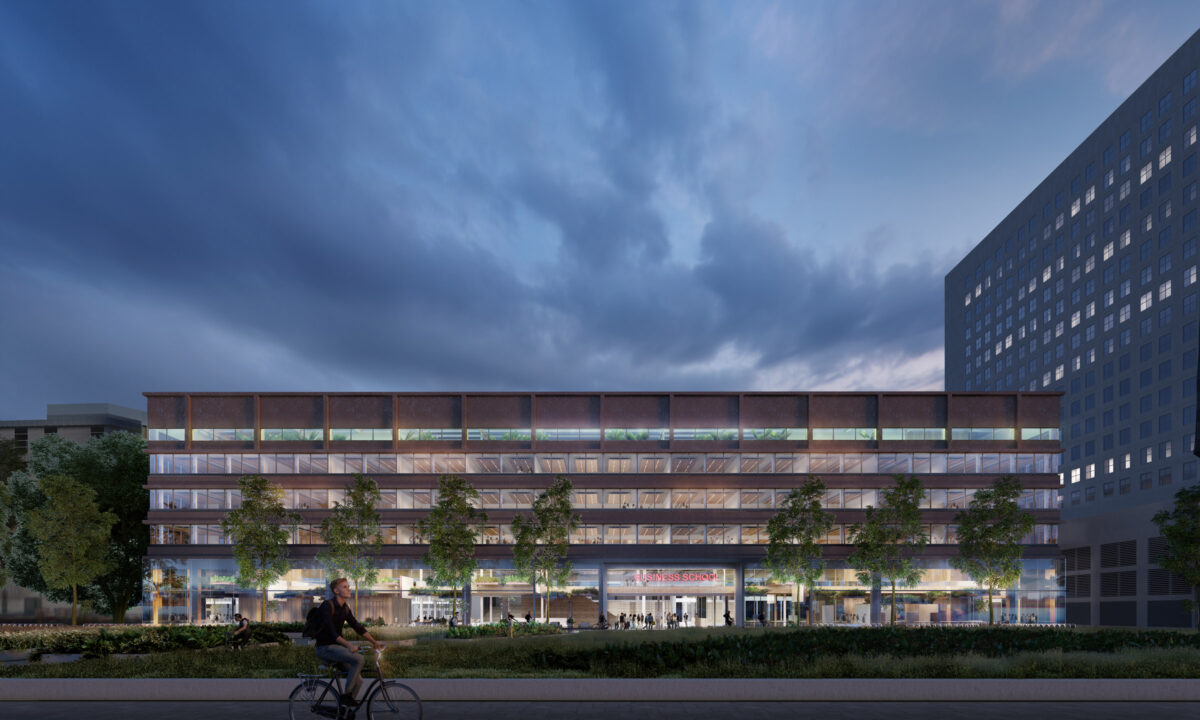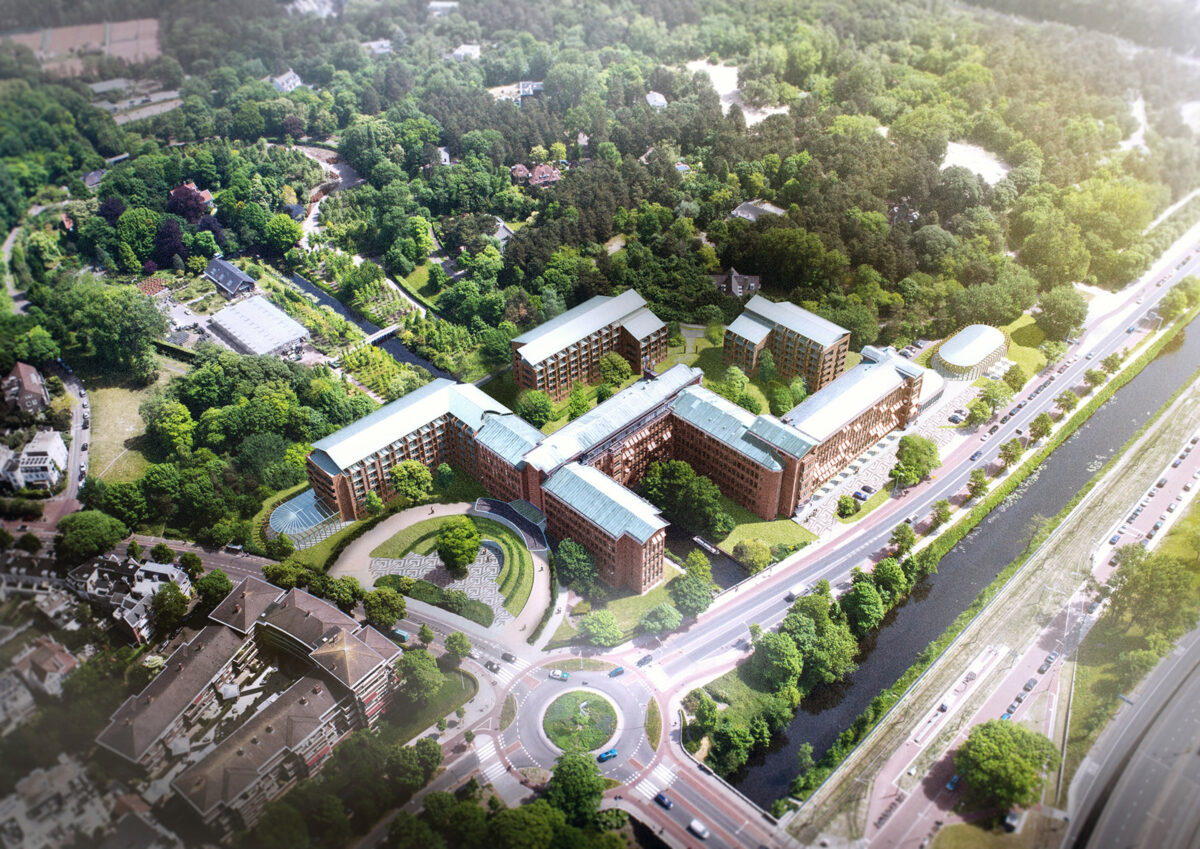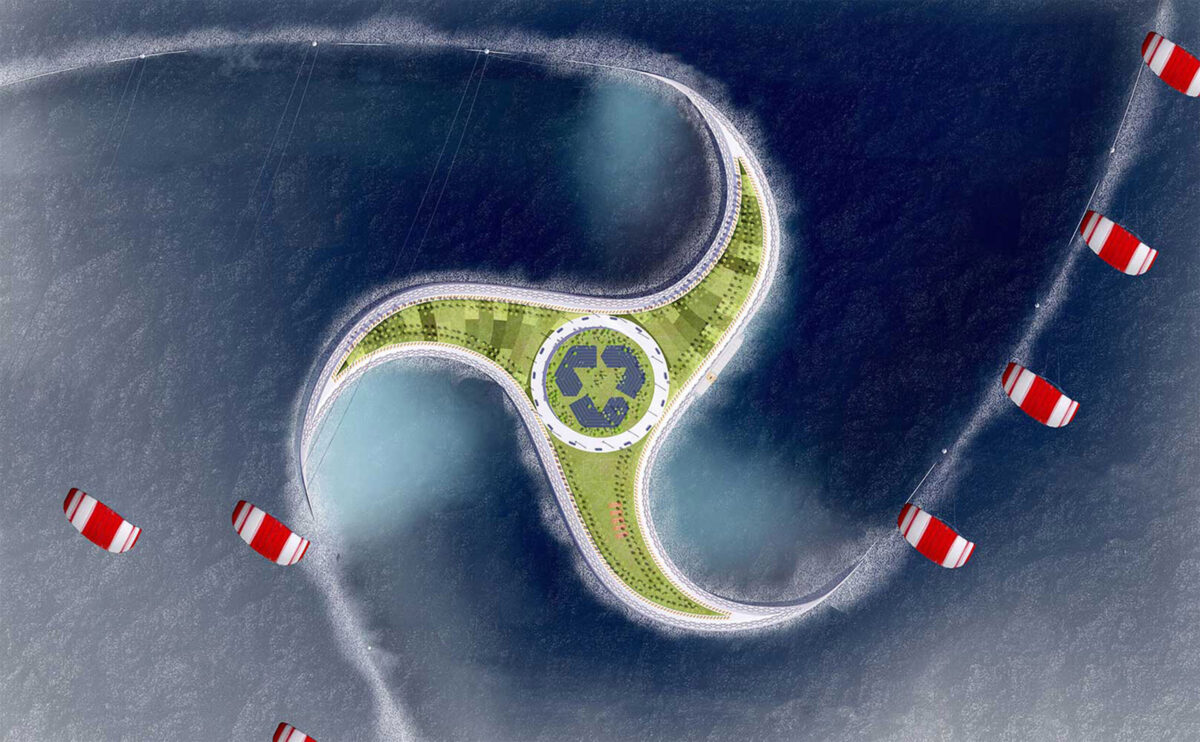Nordic Pavilion EXPO 2025 Osaka
This design for the Scandinavian pavilion shows how a special microclimate can be created with sustainable and innovative technology. An example of human ingenuity and an ode to natural phenomena. An ice landscape formed by using sound waves to convert the heat of the sun into ice. Indeed, with sound.
The Westblaak in Rotterdam is a bustling street. Wide, filled with cars, and challenging to cross. However, it's one of the first streets where the desire for a softer and more 'playable' city center is evident through a pavilion at the head of a skatepark, right in the middle of the lanes. It serves as a precursor to the future Blaakpark. It's logical that even the nine-to-five office buildings are under scrutiny, a transformation into residences has become a feasible option. This design architecturally bridges the past and the present.
Cooltoren
The Baankwartier is a small corner of Rotterdam city centre that seems to be a little overlooked. However, nothing could be further from the truth. The Cool neighbourhood, of which the Baankwartier is part, has been designated as part of the high-rise city. In the place where the relics of the reconstruction determine the streetscape, the skyline of Rotterdam will be enhanced with the Cooltoren. The tower is so much more than apartments stacked up to the maximum construction height. It connects the various heights in its environment, on a large and small scale. The ‘Rotterdam layer’ and the frequently used construction height of around 70 metres are therefore very decisive, and naturally the base and top of the tower. Differentiating the building volume at these specific heights inextricably links the Cooltoren to the urban fabric and the Rotterdam skyline.
The Caland
Calandstraat, a picturesque street in the Scheepvaartkwartier of Rotterdam, is characterized by impressive blocks on either side. Originally, these blocks primarily housed commercial buildings and port offices. In the northern part of the street, many of these blocks were replaced with offices in the 1970s. The office building at number 41 had been vacant for a decade, presenting a unique opportunity to breathe new life into this section of Calandstraat and strengthen the entire area.
Solar Pavilion
The central theme of Dutch Design Week 2022 is Get Set. It indicates a shift in mindset: We're bracing ourselves, it's time to take action and we have to do it together. The Solar Pavilion realized the transition from solar technology to solar design through an inspiring collaboration between designers, engineers, builders and innovators. It resulted in a pavilion full of poetry and pragmatism in which the energy of the sun provides an extraordinary experience.
Amsterdam's Zuidas has something of a dual character. Colossal offices on the south side of the A10, and terraced houses on the north side. In the middle there is a building from the 1970s, designed as an office, that is used as a school and which we are bringing back to its original function. However, it will become the 'best-in-class office building', because the city, neighbourhood, location and building demand this. We felt duty-bound to do this.
Transformation Brinkman & Van der Vlugt monument
“This little building also proves to us that 'The New Building' is not tied to specific materials, as is often wrongly assumed. It just depends on how it's done."
It is not a building in the traditional sense, but a temporary circular climate system – a biotope – with an intense, sensory experience.
Hulstkamp
The land next to the Hulstkamp Building on the Maaskade on Rotterdam’s Noordereiland has been waiting to be filled since 1892. A variety of circumstances meant it was not possible until now to construct an appropriate building here. Four luxury apartments will now be built on and around the low-rise building next to the Hulstkamp Building. It is a sensitive project, in a sensitive location. Maaskade is an urban conservation area, and the Hulstkamp Building is a nationally listed building.
Nieuw Kralingen
Designing a house without the floor plan feels somehow strange and a little unsatisfactory. But it is precisely this incomplete design question and the dilemma of how to realize a neighbourhood worthy of the name 'Nieuw Kralingen' within the current construction economy, which challenged us as architects to go all the way.
The Green House Floriade
The exhibition greenhouse is by far the largest building at the Floriade 2022 in Almere. It is constructed entirely from standard greenhouse elements and its prominent, raised central axis reveals its special function. The scale and unusual profile of the greenhouse make it a temporary icon for the horticulture sector at the Floriade.
KOER is a landmark on Laan op Zuid, a striking vision between the many new buildings under construction. It is a residential block with a strong, unique identity created by the dynamic lobby, an eye-catching marathon gallery, a communal park and a special phenomenon called Villa Residu.
The Municipality of The Hague has developed Grote Marktstraat into the city’s main shopping street with an international ambience. The street has been turned into a sophisticated, car-free shopping boulevard. In line with this ambition, the old Sijthoff City has been transformed from a down-at-heel 1980s office building into a sophisticated retail Mecca.
Blaak House, designed by Kees Elffers as a classical interpretation of reconstruction architecture dates from 1950 and initially accommodated the Netherlands Trading Society. The building is characterised by a distinctive brick facade with a stately portico and a splendid natural stone entrance. Although it was once considered as ‘ready for demolition’, in 2010 it was designated as a nationally listed building.
Villa K6
Rieteiland-Oost was developed as a villa island on the new housing development (Vinex) neighbourhood of IJburg. Free-standing houses on expensive plots. This led to houses in the urban plan that are close to each other, but this density is adequately compensated with a public space with a high-quality design around a ‘dune’ theme. Our client decided to move with his family from the city centre of Amsterdam to a plot with its own private pier on the waterside of this island. We were asked to design their dream home here - a robust beach house.
In 2016, KPN decided to move its head office functions from The Hague to the KPN Toren on Wilhelminapier in Rotterdam. This building from 2000 by architect Renzo Piano is right next to the Erasmus Bridge and is known for its sloping facade. KPN wanted to add a sizeable publicly accessible programme and at the same time design all work and meeting places in accordance with KPN’s SMART technology.
Mediahaven
Now that the Houthaven neighbourhood is no longer used for the transhipment of timber, this section of land is changing into a mixed creative area, while retaining its industrial character. Soon this will be home to large ships, stylish fashion, rugged factories, lively television recordings and theatre shows. Mediahaven turns making television into a public and open experience, and it is a creative pioneer that has brought expression to the transformation of Houthavens.
Rijk van Rodenrijs
“De Klokkenwoning” is located on the Rodenrijseweg in Berkel. This is a monumental farmhouse from 1852 that owes its name to the clock on the drawbridge, which is one of the few drawbridges that still exist in Berkel. For the owner of the farmhouse, we created a special plan to restore the monumental farmhouse that had become dilapidated to its former glory and to create extra homes on the grounds, while retaining its historical character.
Nieuw Hoboken
Nieuw Hoboken, designed by the well-known Rotterdam architect Herman Bakker, was built in 1974 as an office building, deserves better. It continues to be a distinctively burly ‘seventies’ building, but no longer is no longer appropriate for these times or this site. A closed ground floor facade and a monofunctional office building in a residential neighbourhood were signals for the new owner to consider redevelopment.
Saftlevenhof
Rotterdam West is characterised by urban blocks built between 1900 and 1930. These urban blocks have a courtyard that mainly consists of a system of private gardens. The size of this courtyard is determined by the surrounding street pattern.
Heliport Dordrecht
A motorway is not a city square, shopping street, or road leading to a train station. A motorway crosses through the landscape, touches cities, and above all offers visibility and accessibility. Why then do we often see office buildings alongside motorways that look as if they are part of the urban fabric? Why do they have the front door on a pavement, with a picnic table behind a sound barrier and a large logo on the roof for recognition? We think this can be done differently and better. Heliport in Dordrecht was founded on these ambitions.
Verto
Built in 1960 to serve temporarily as a town hall, and then used for years as a workshop and studio, the building was transformed into a residential building in 2018. The original building has a fascinating modernist and no-nonsense appearance but does little in terms of urban planning to make this part of the inner city more interesting. This is where the challenge lay for us, namely, to retain the DNA of the building and the character of the south side of the city centre as post-war reconstruction architecture and create a second reconstruction that provides a quality boost for Arnhem.
Nigtevecht bridge
This exceptional unique location stands out from the other crossings over the Amsterdam–Rhine Canal because of its cultural and historic significance. This is the point where the Defence Line of Amsterdam (UNESCO world heritage site since 1996) and the New Dutch Waterline meet each other. This scenic and military cultural history primarily relates to earth-moving and flooding, which is represented in all aspects of the bridge’s design.
